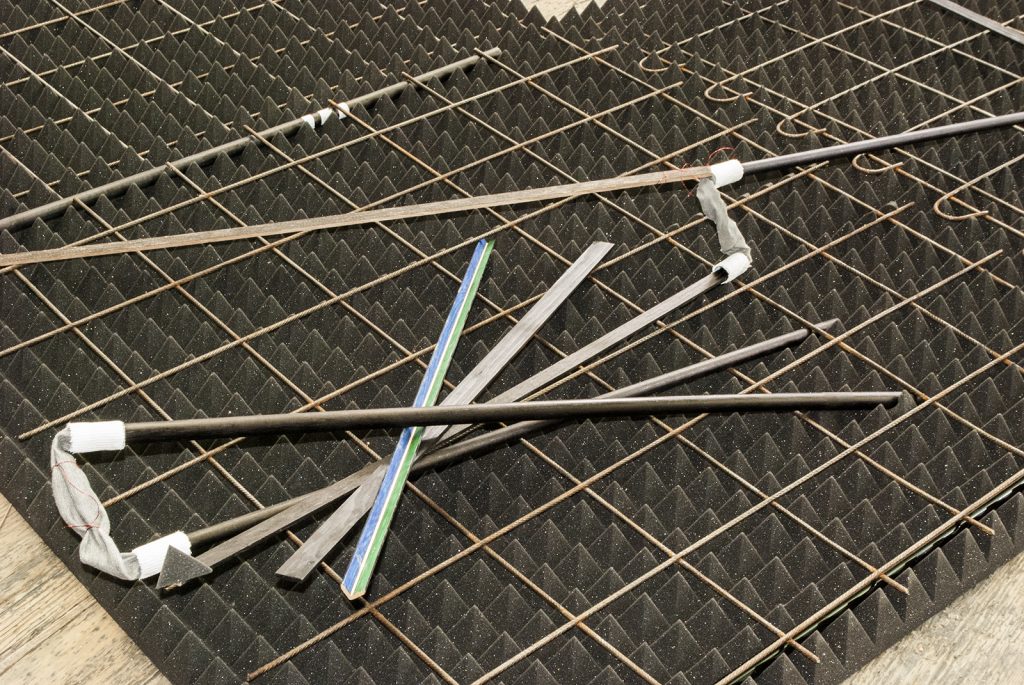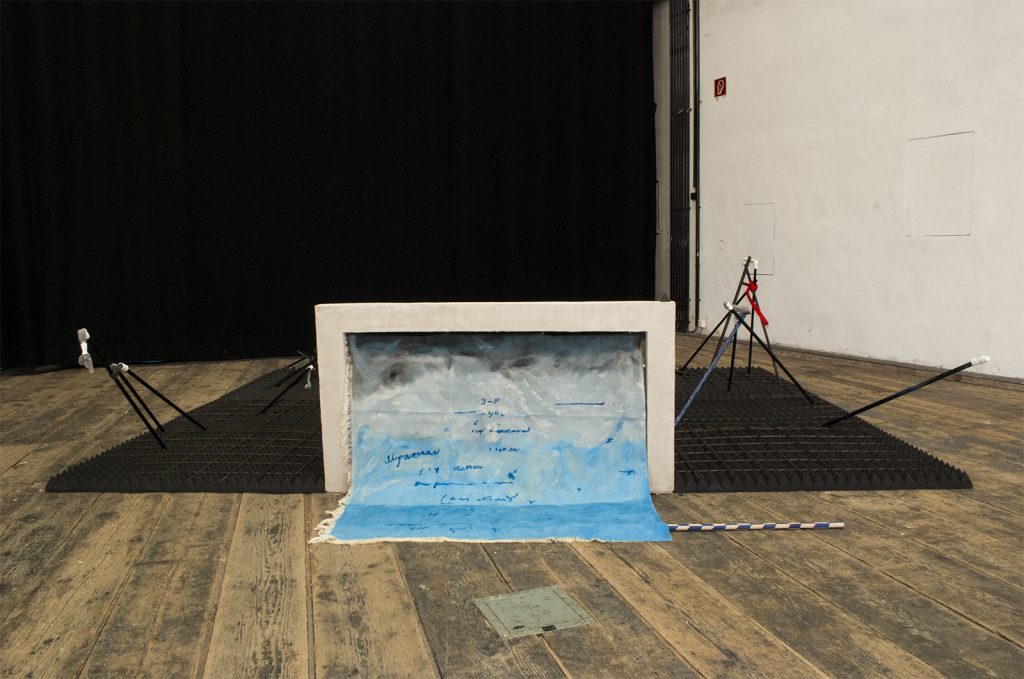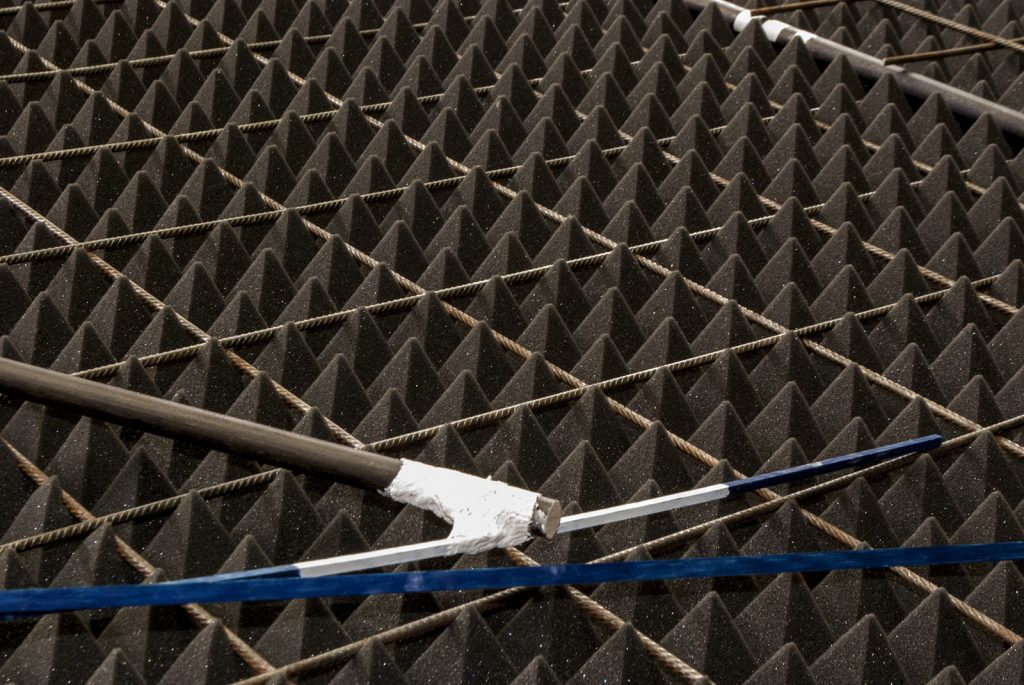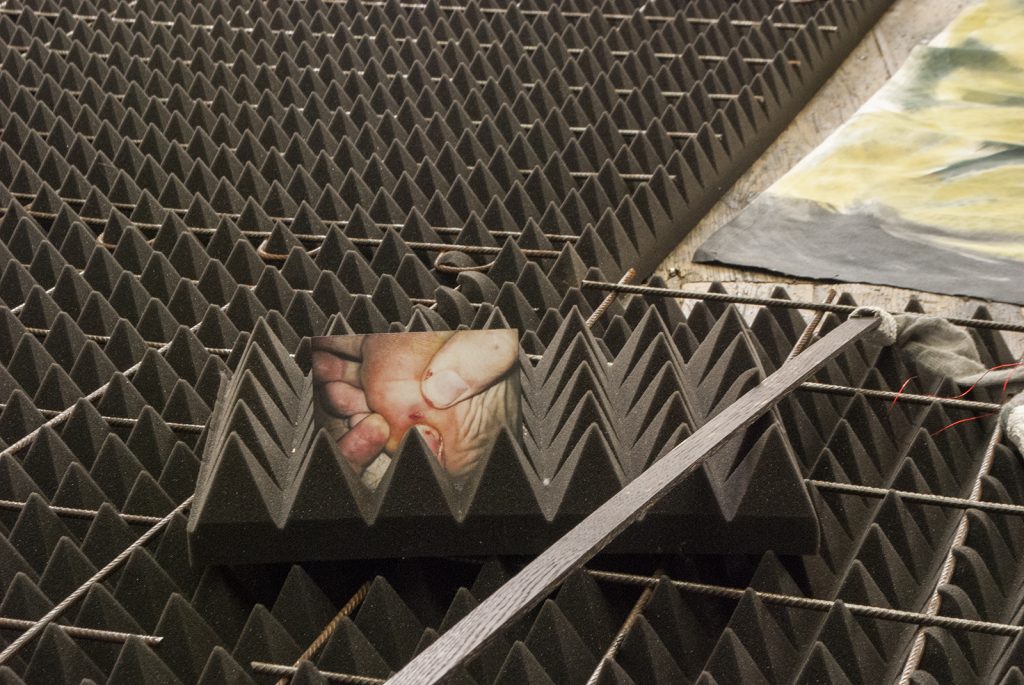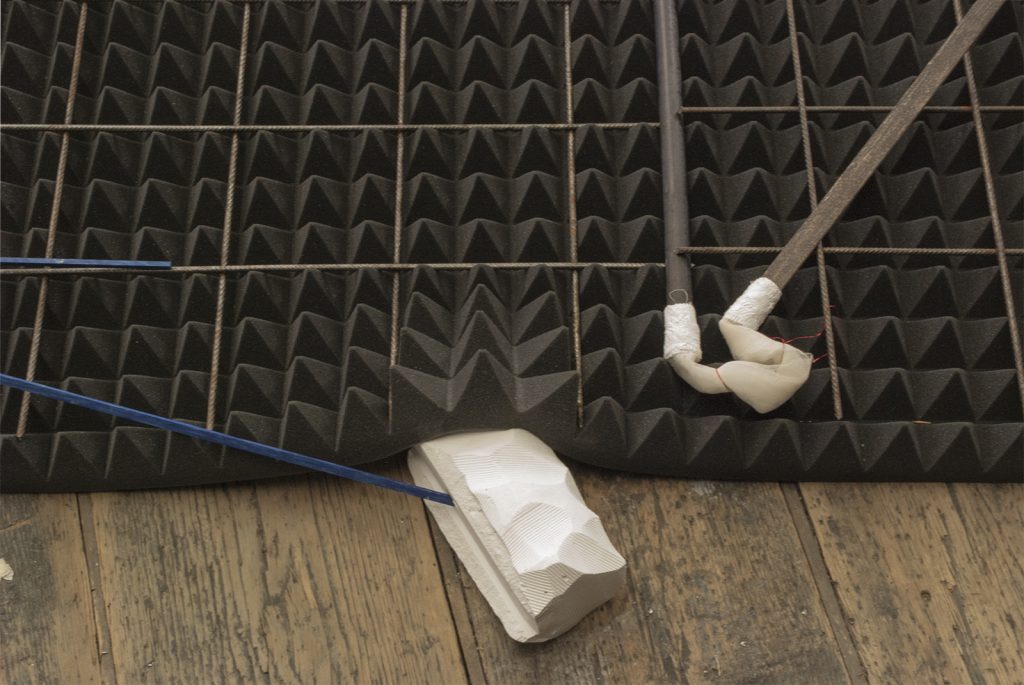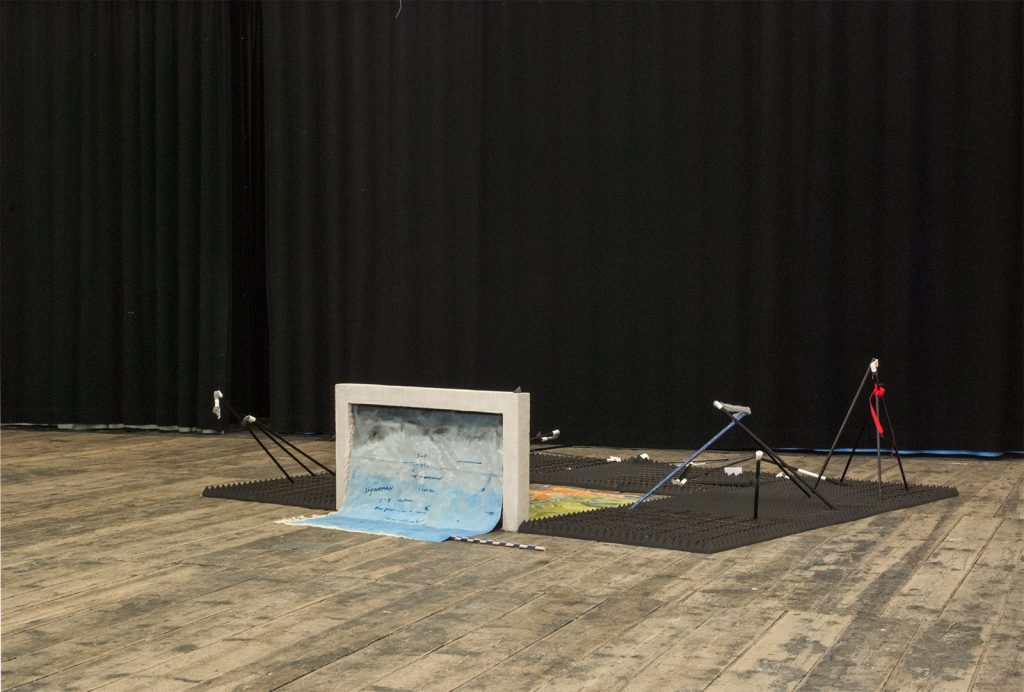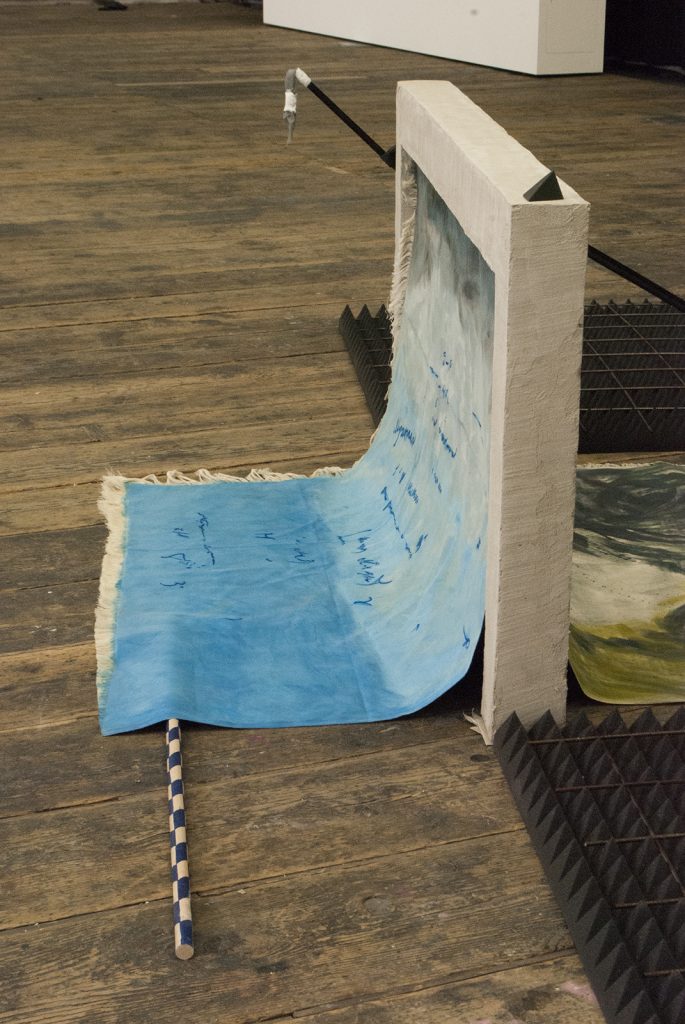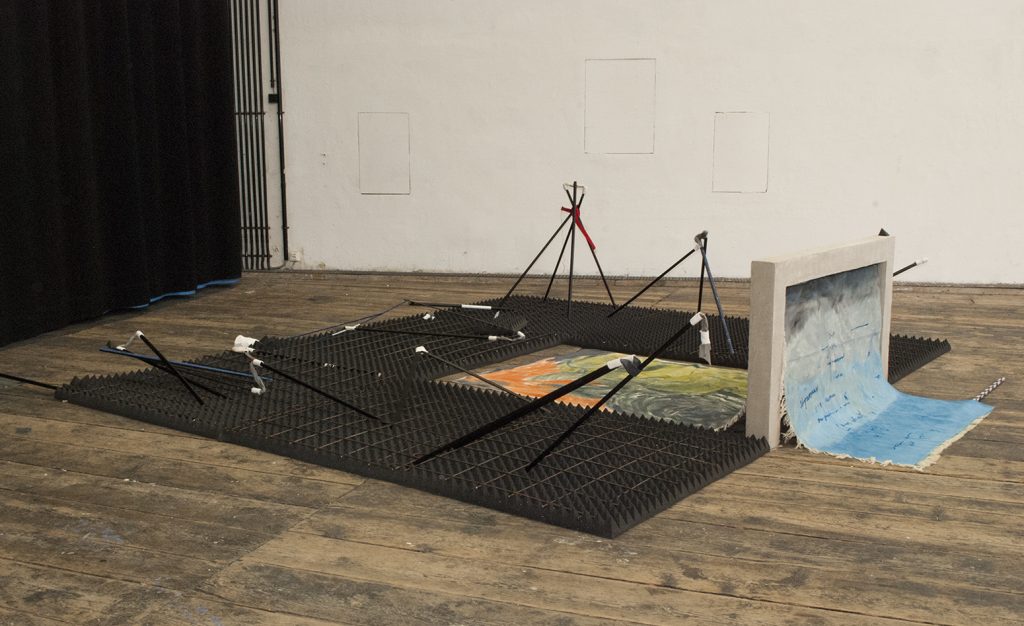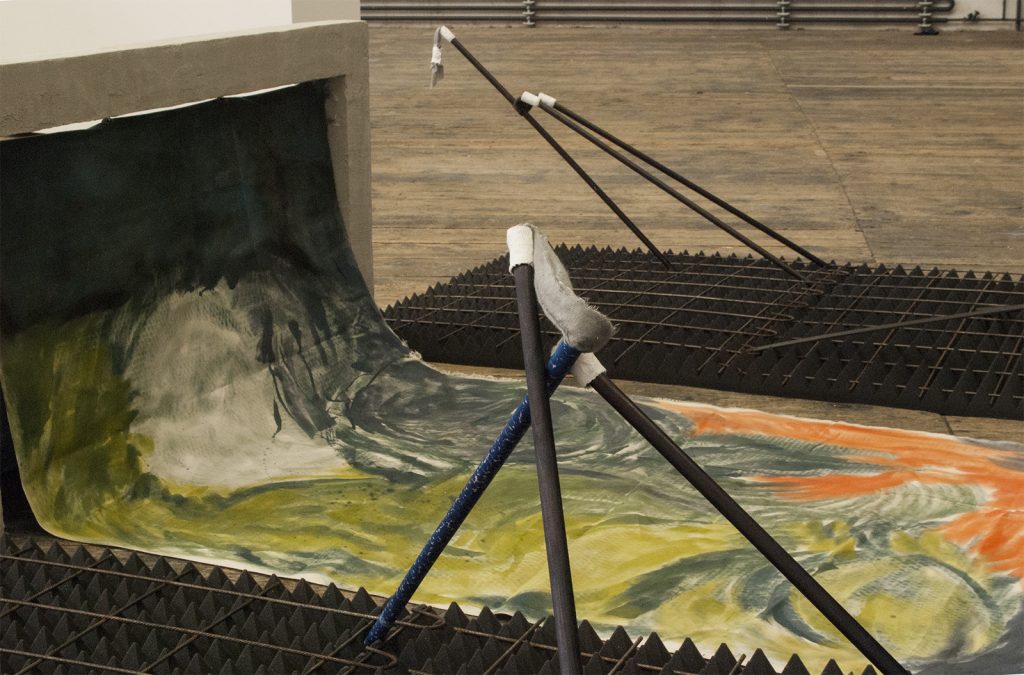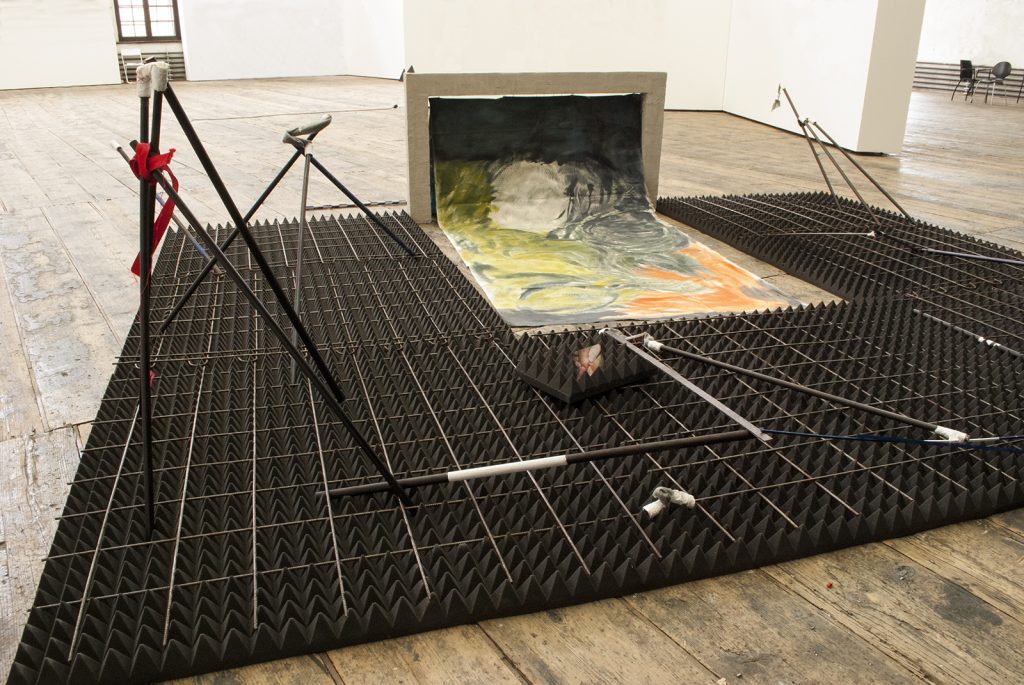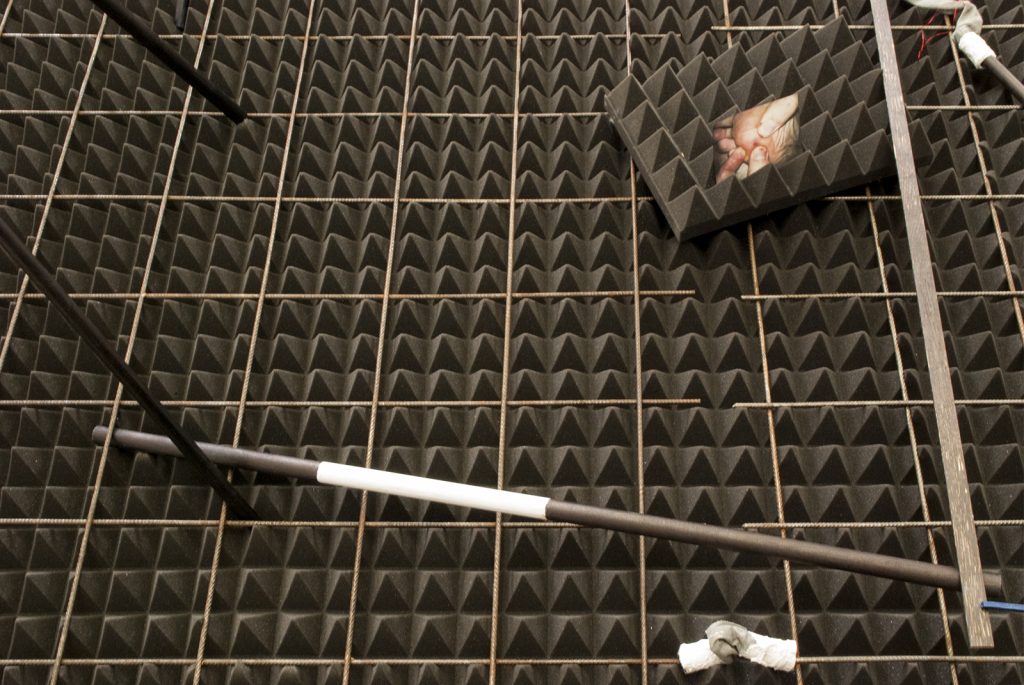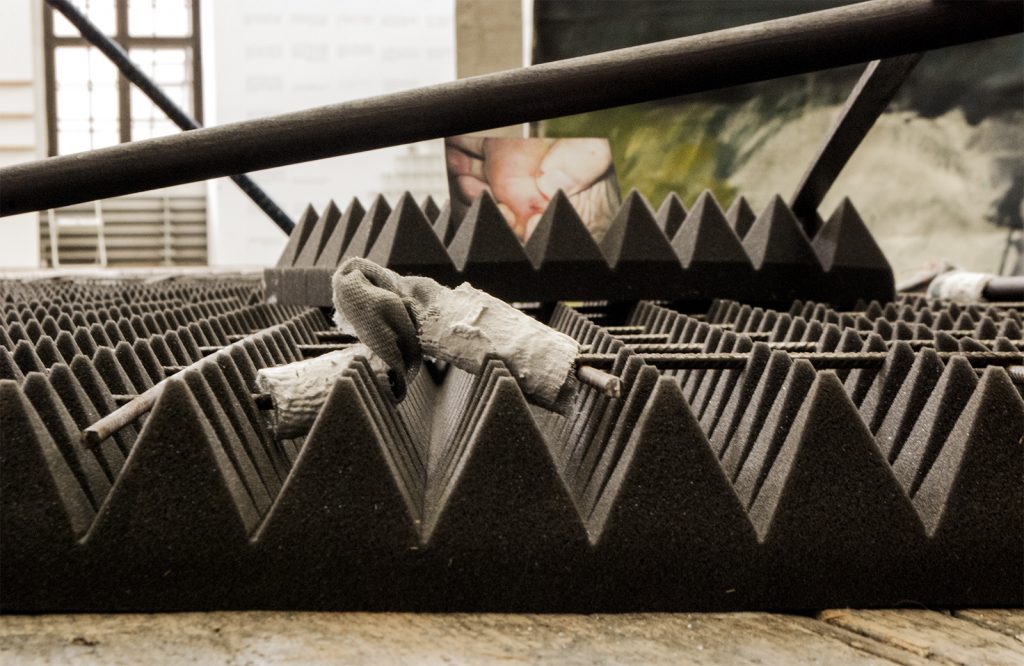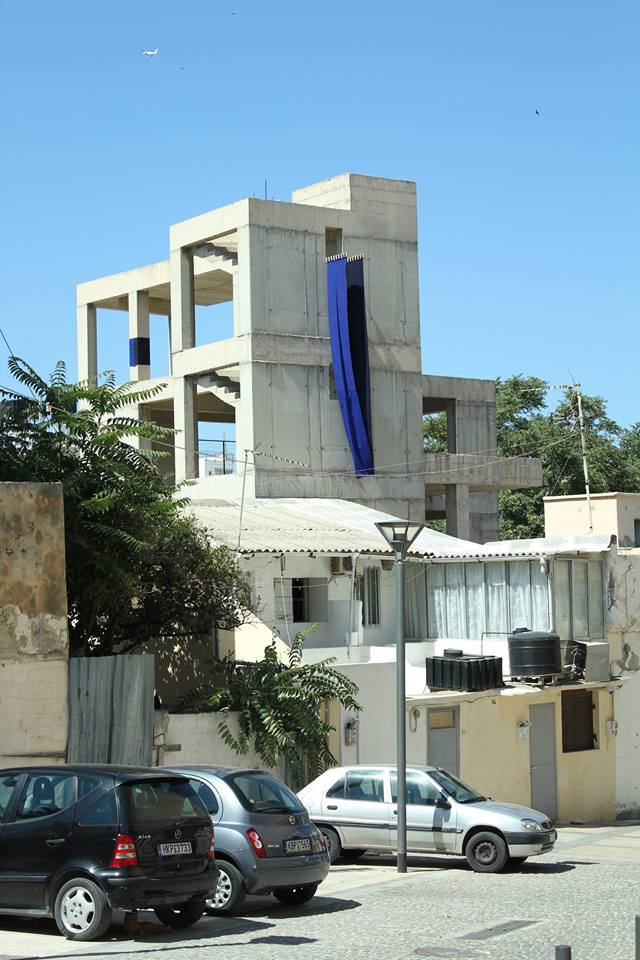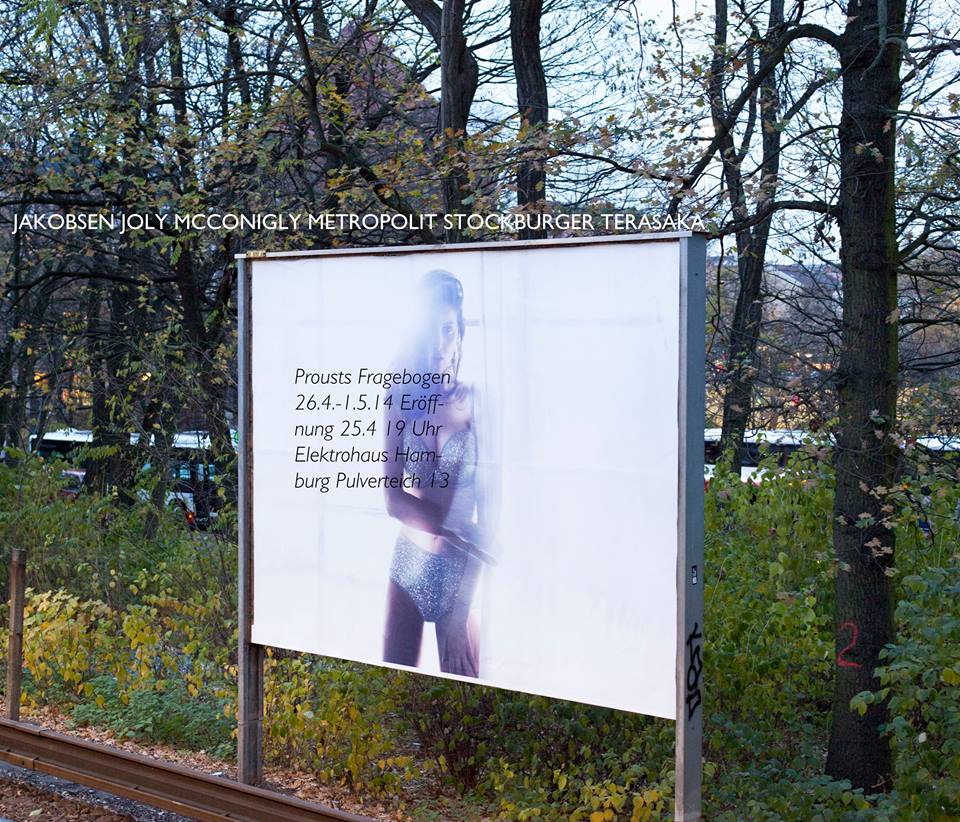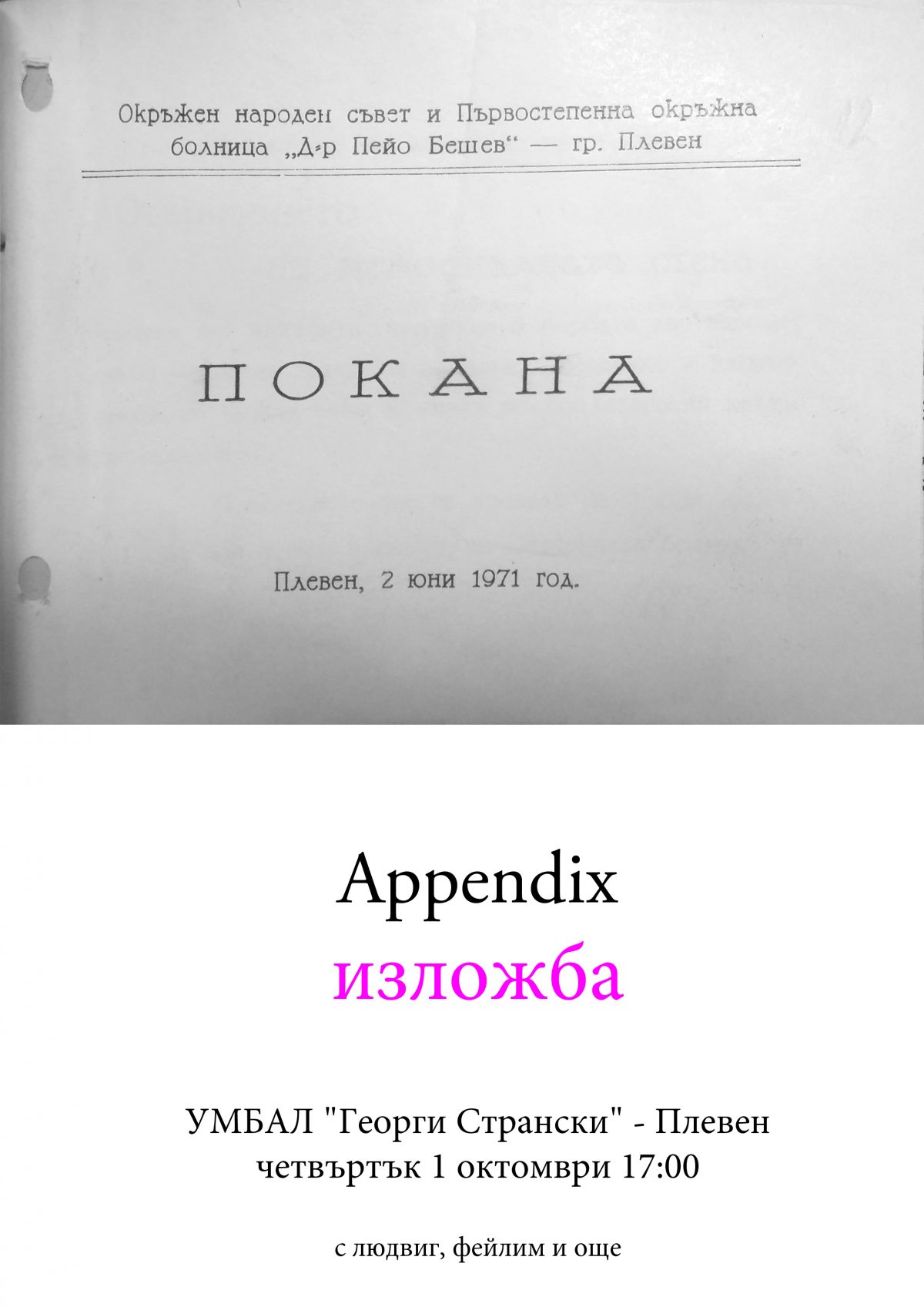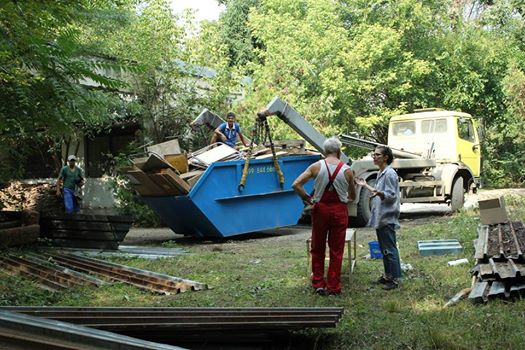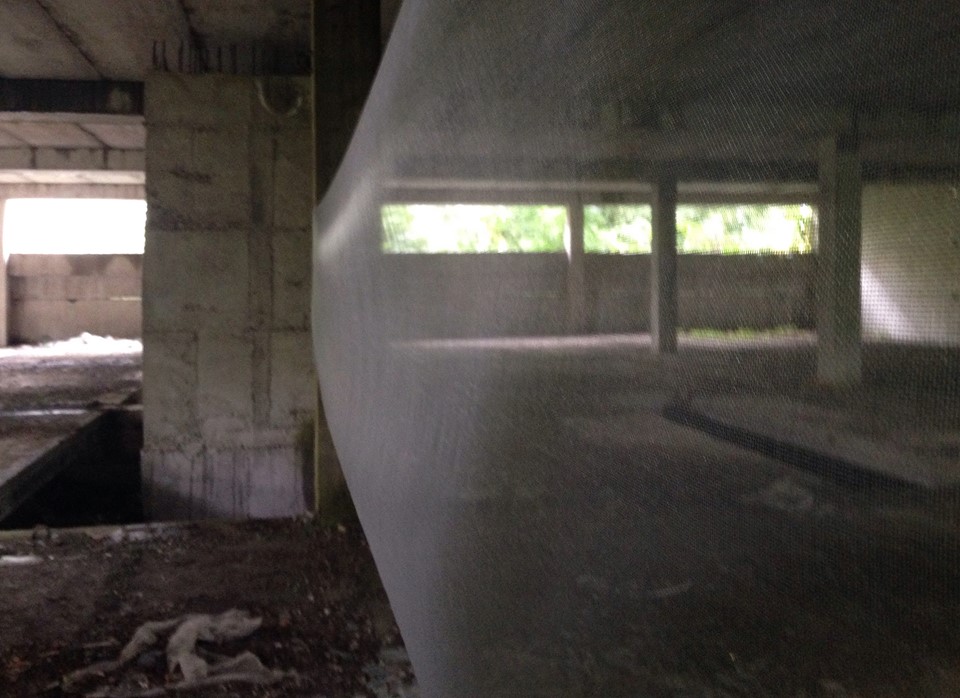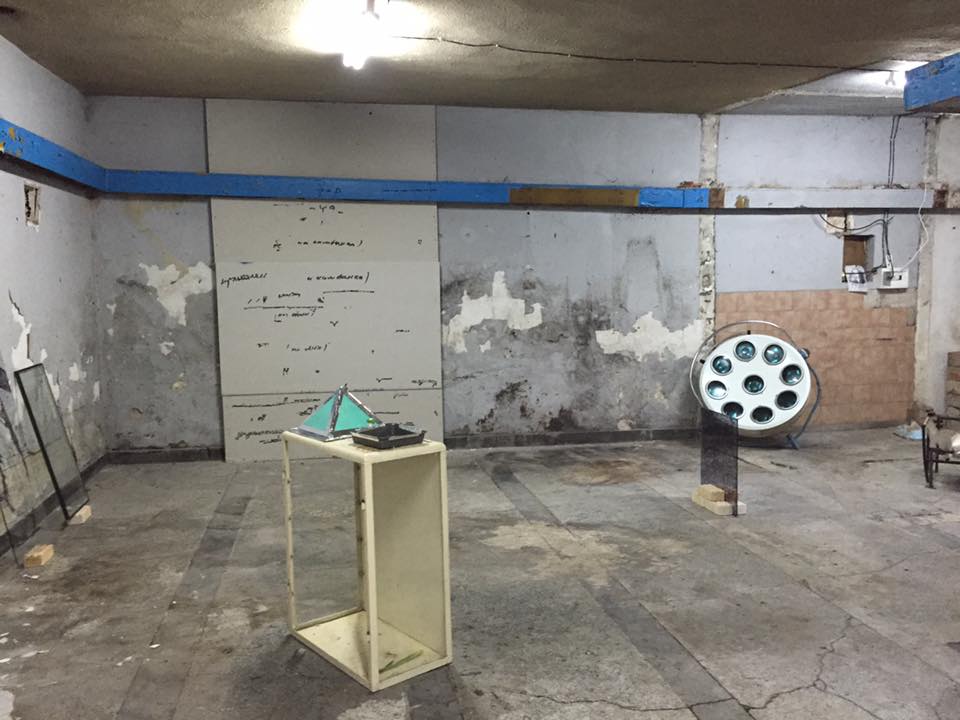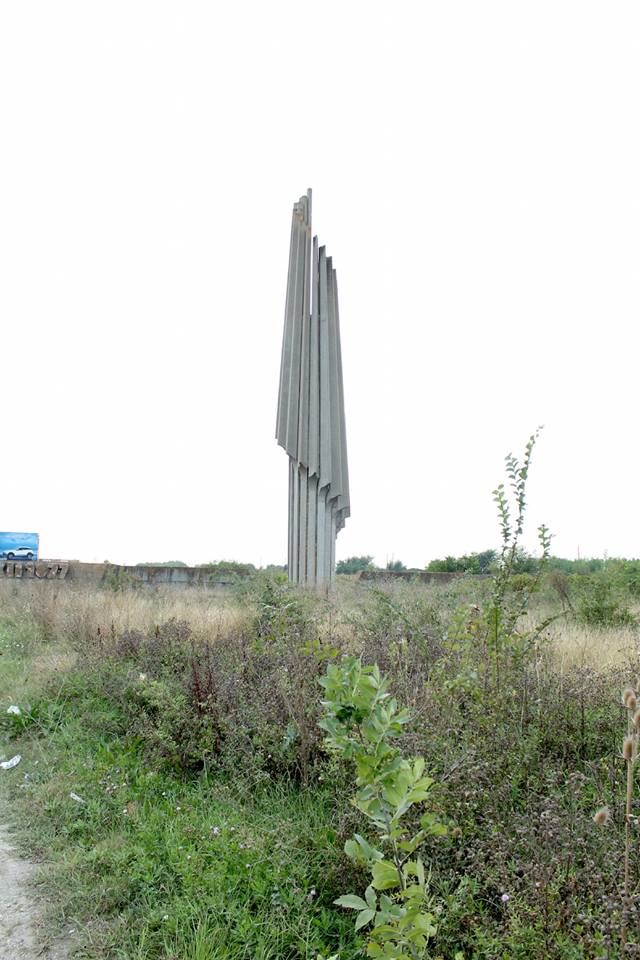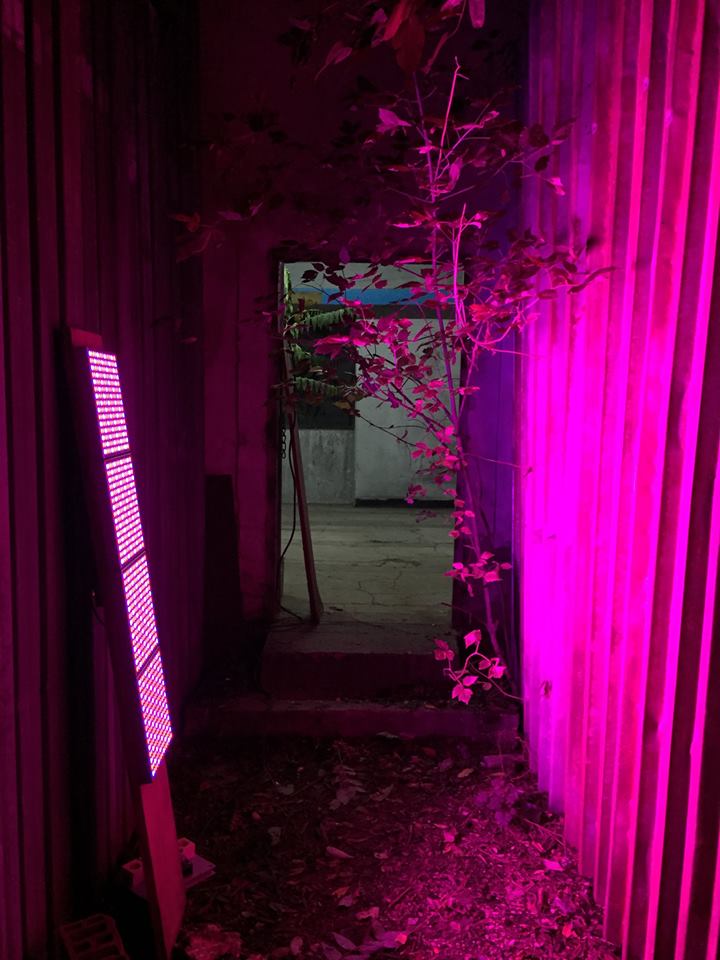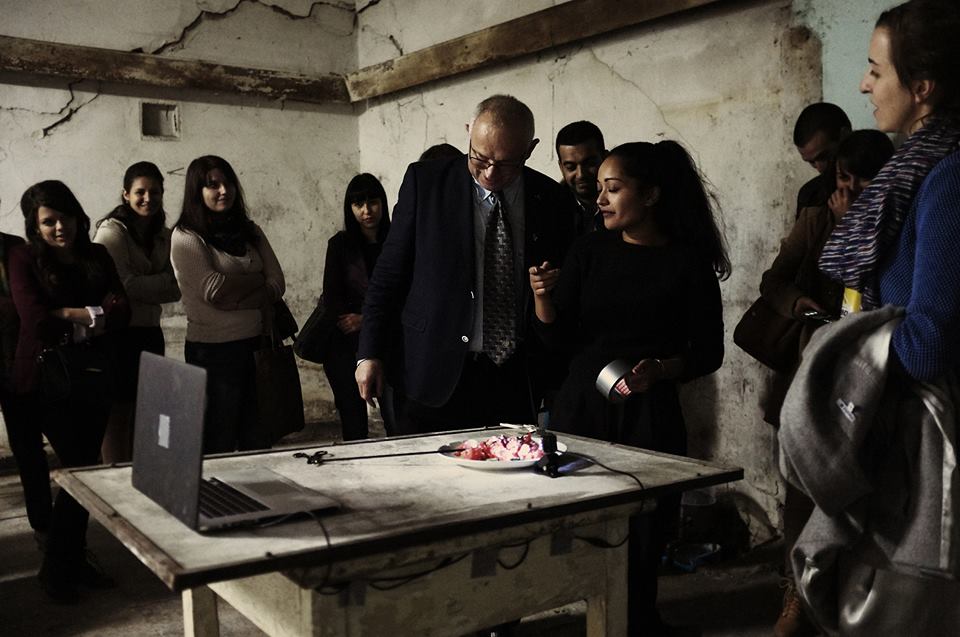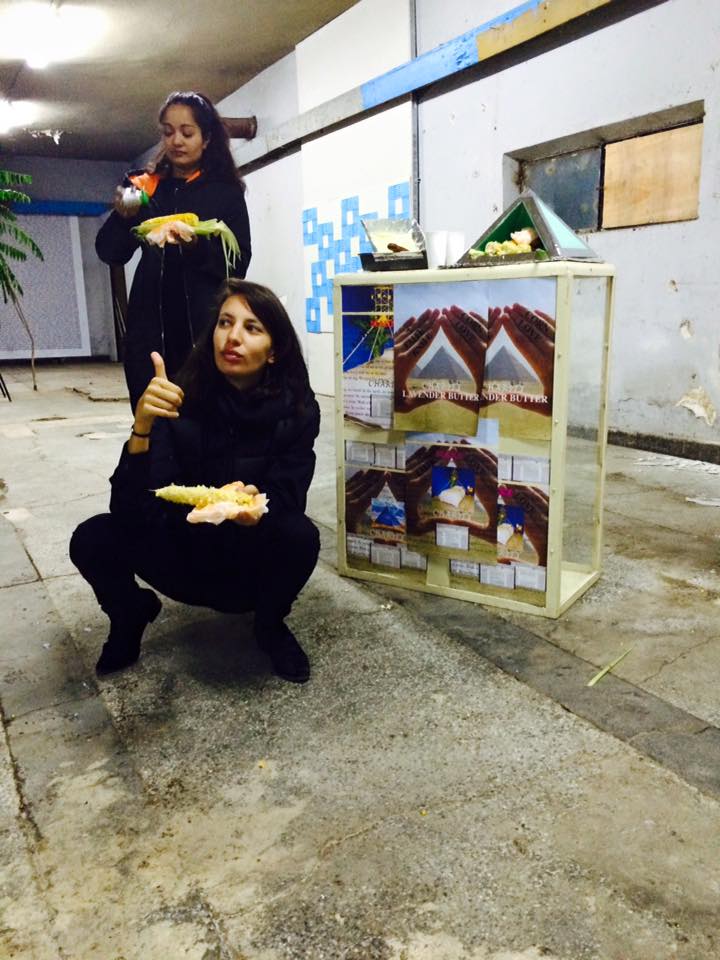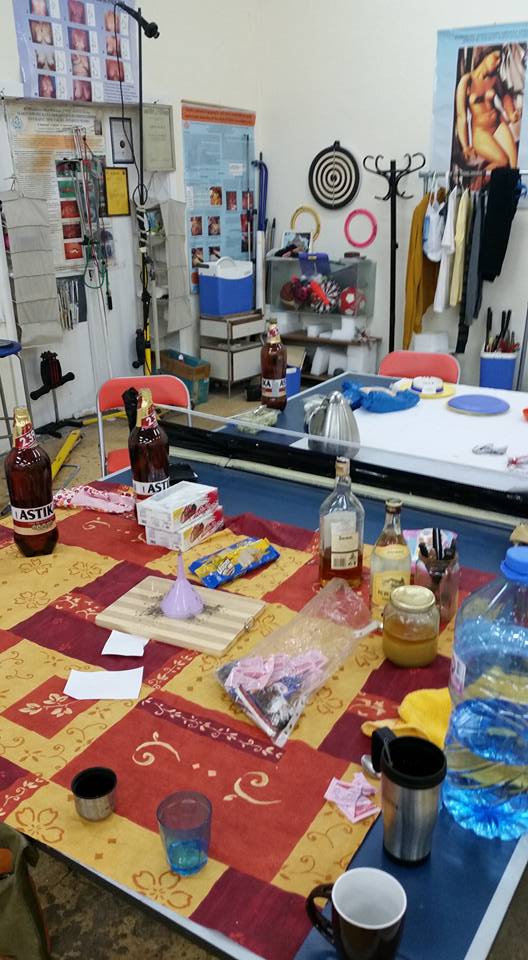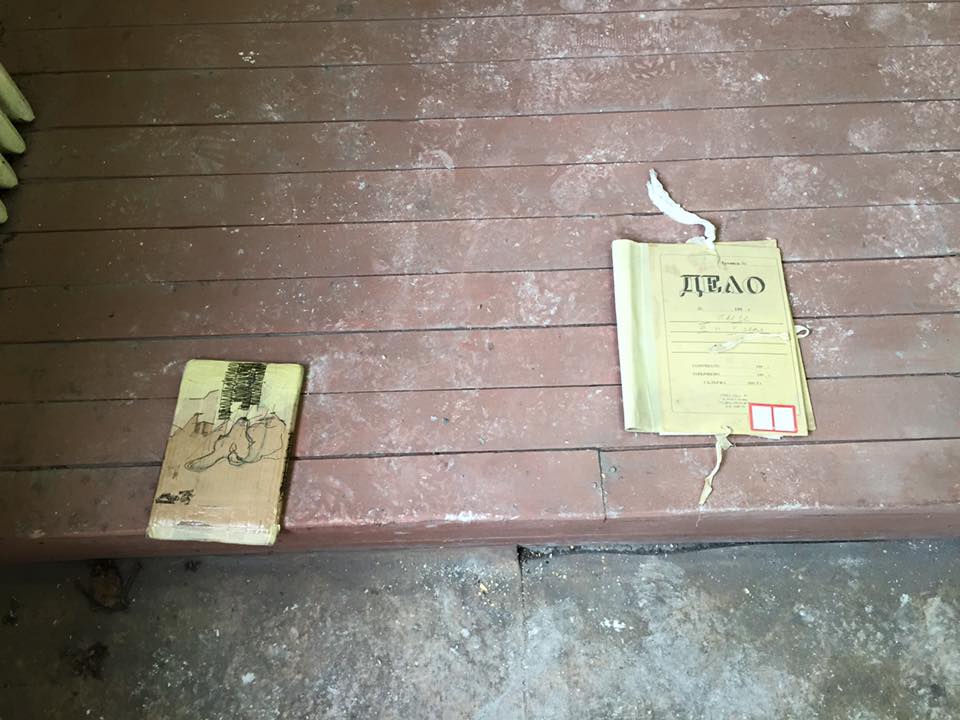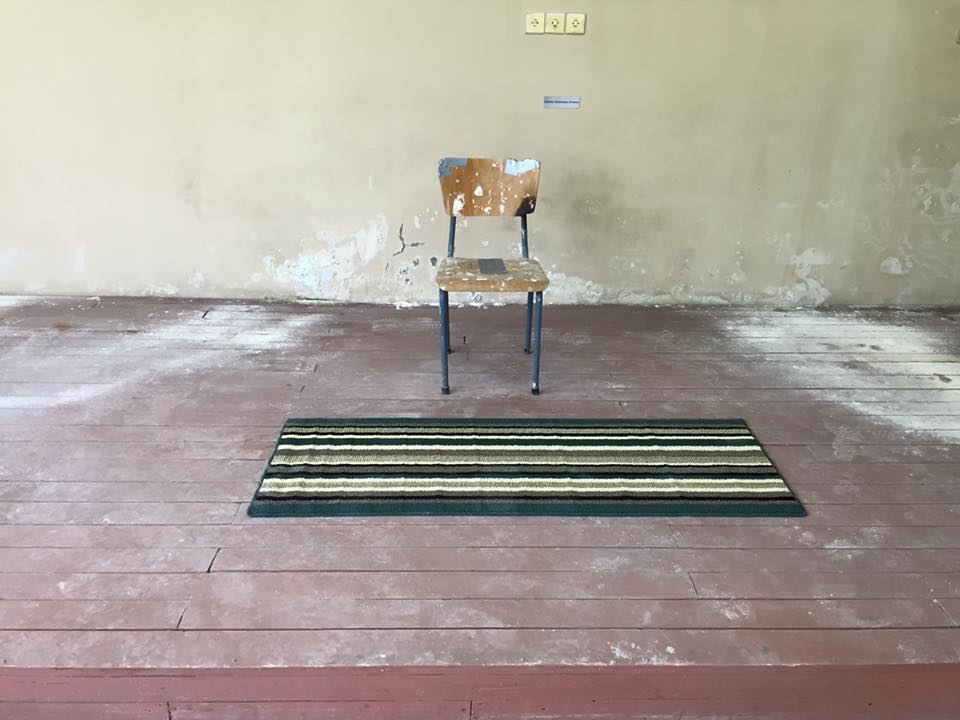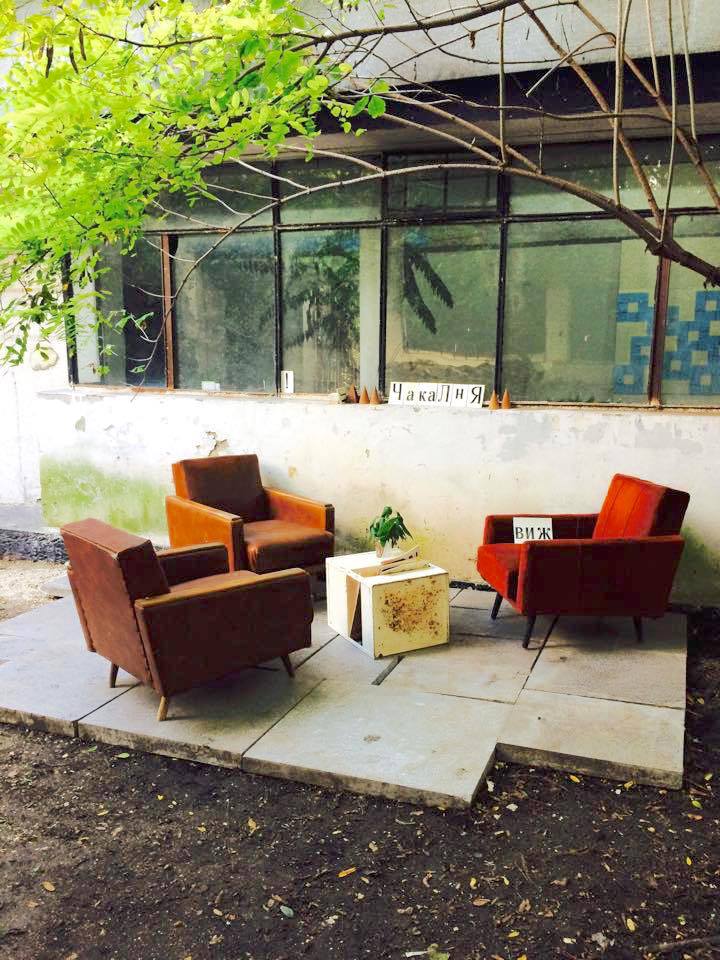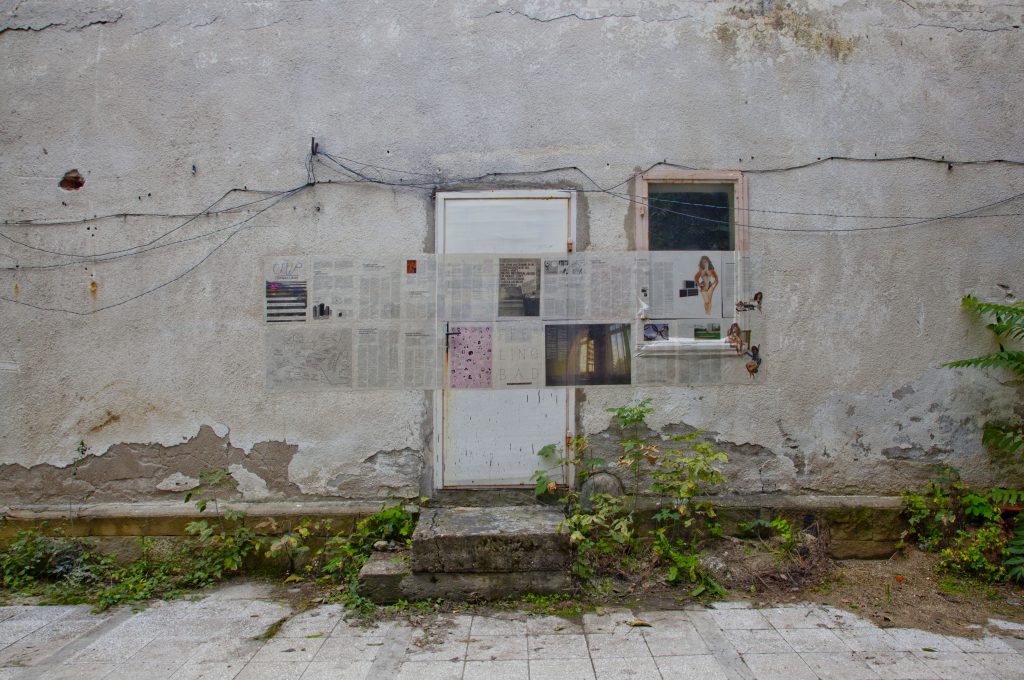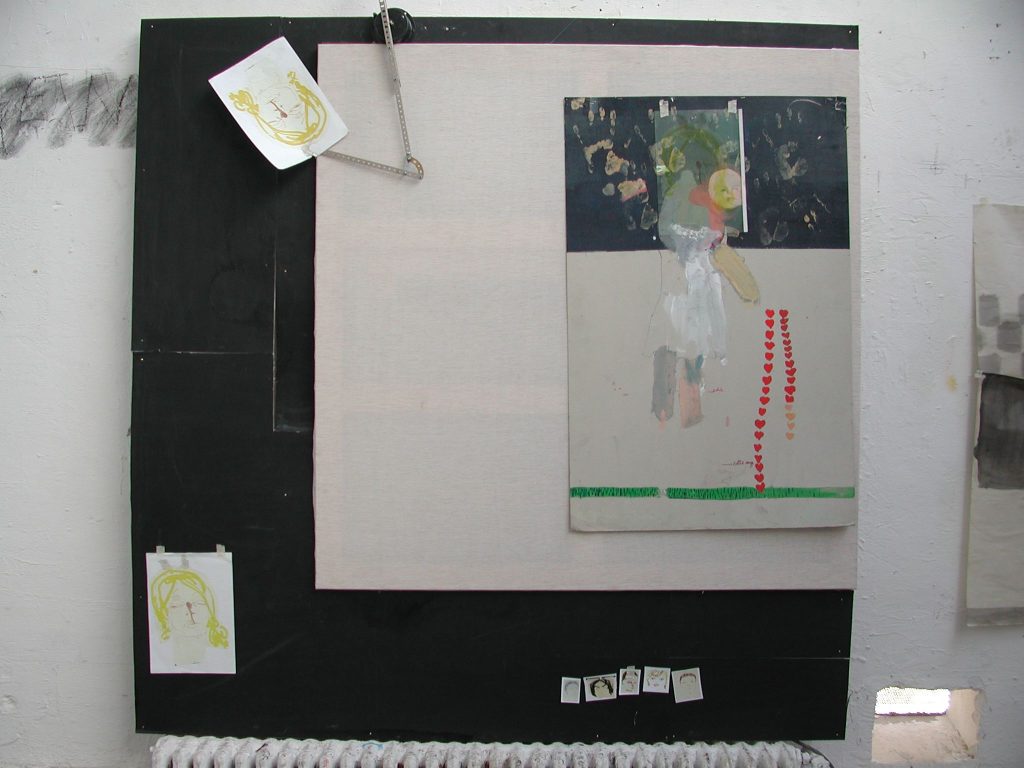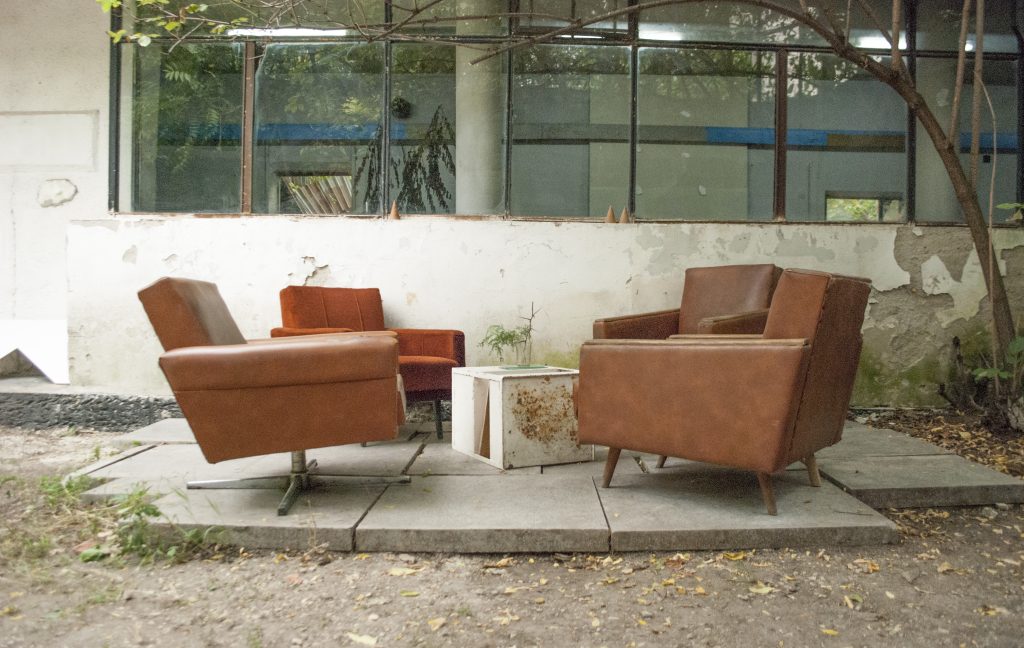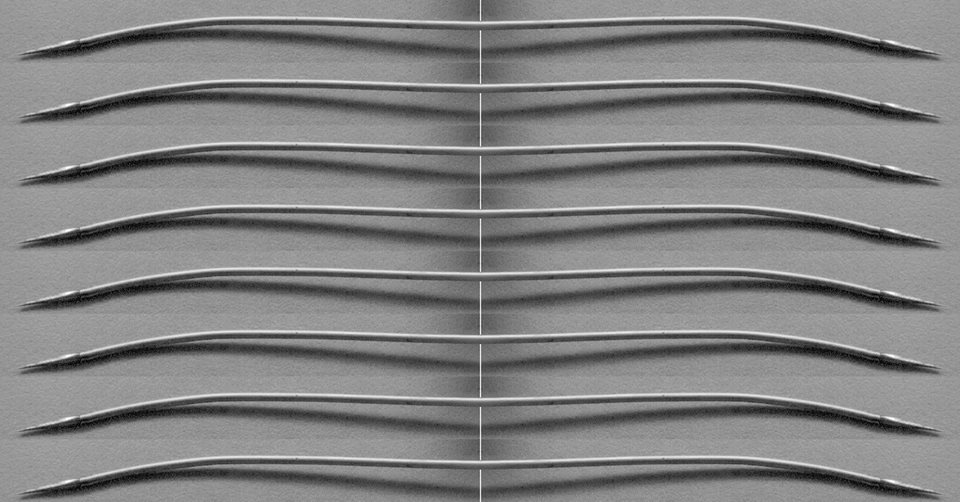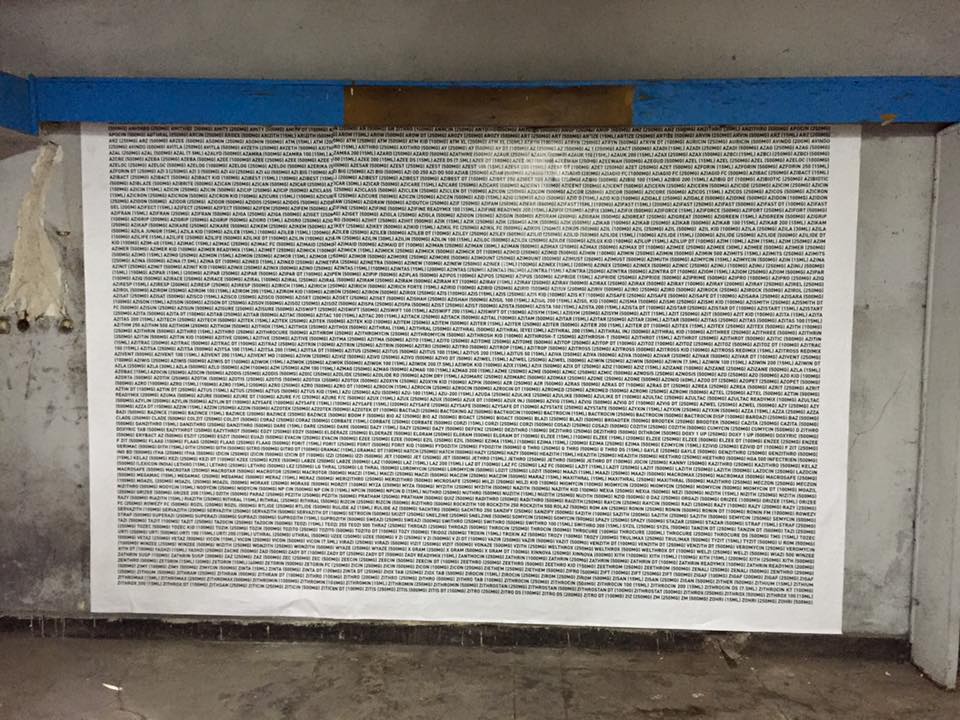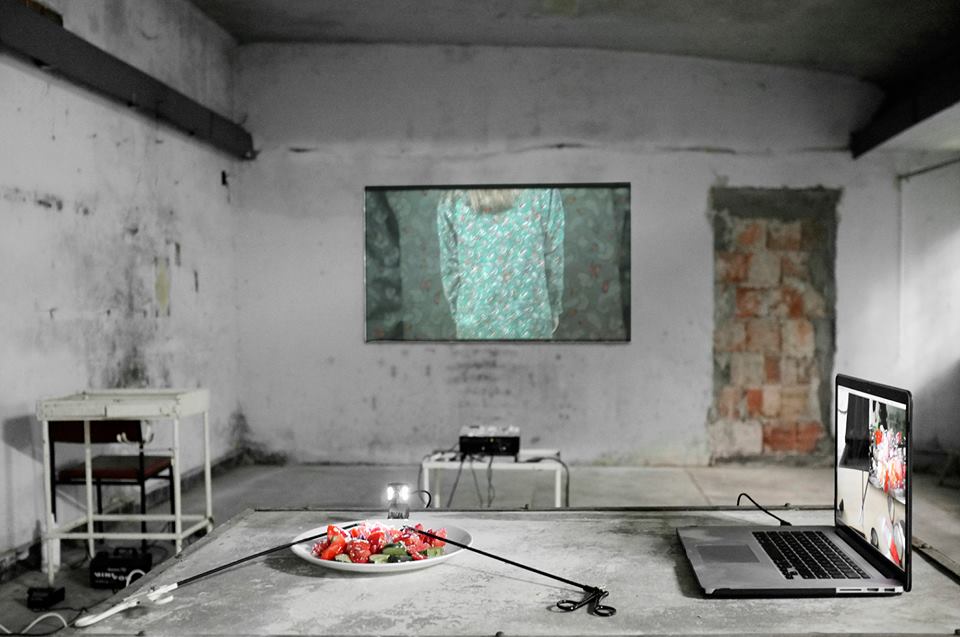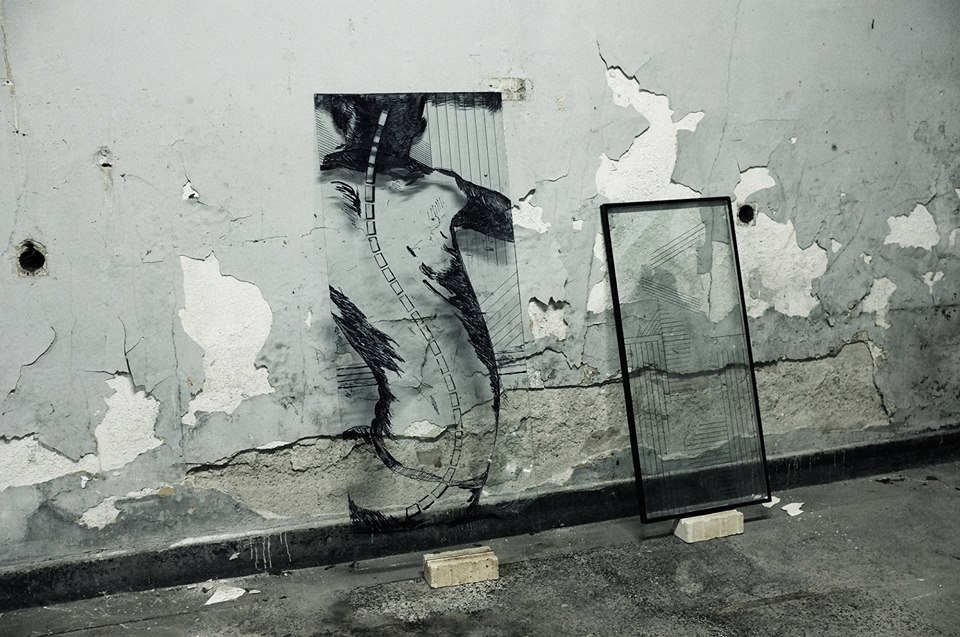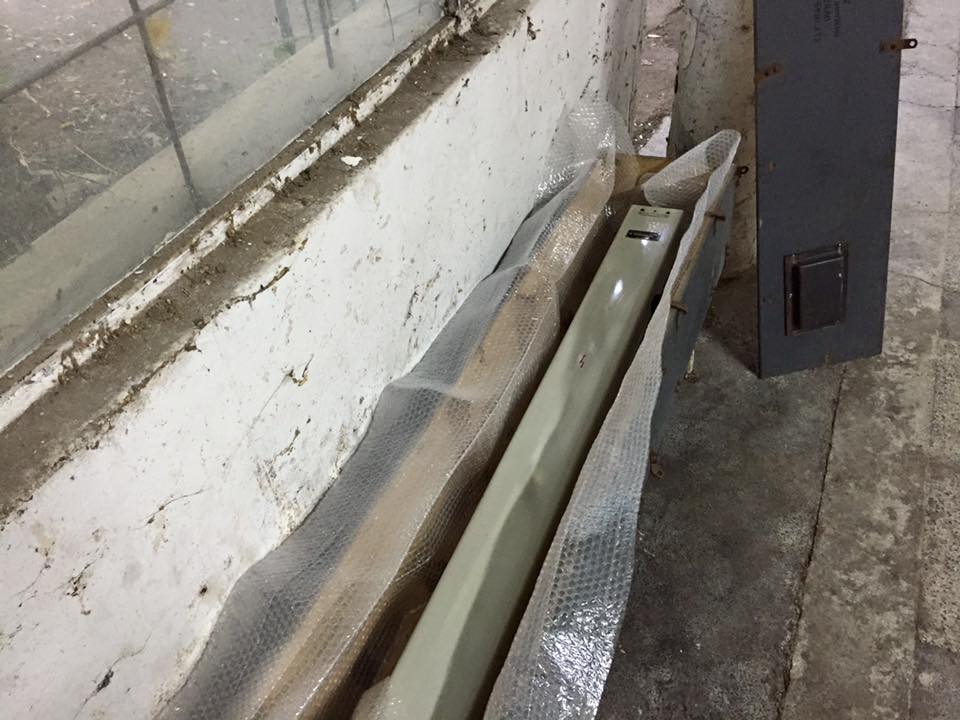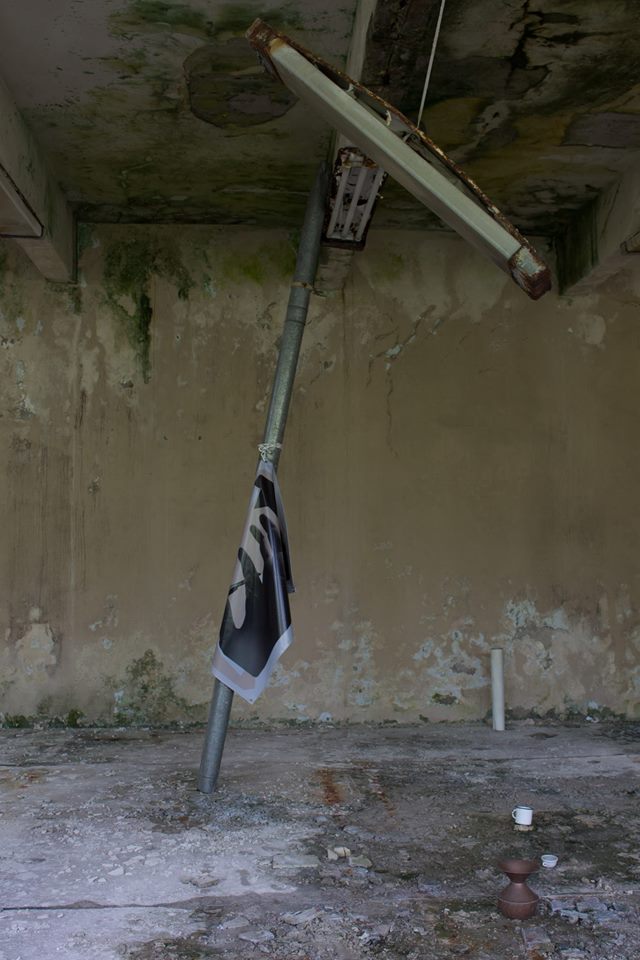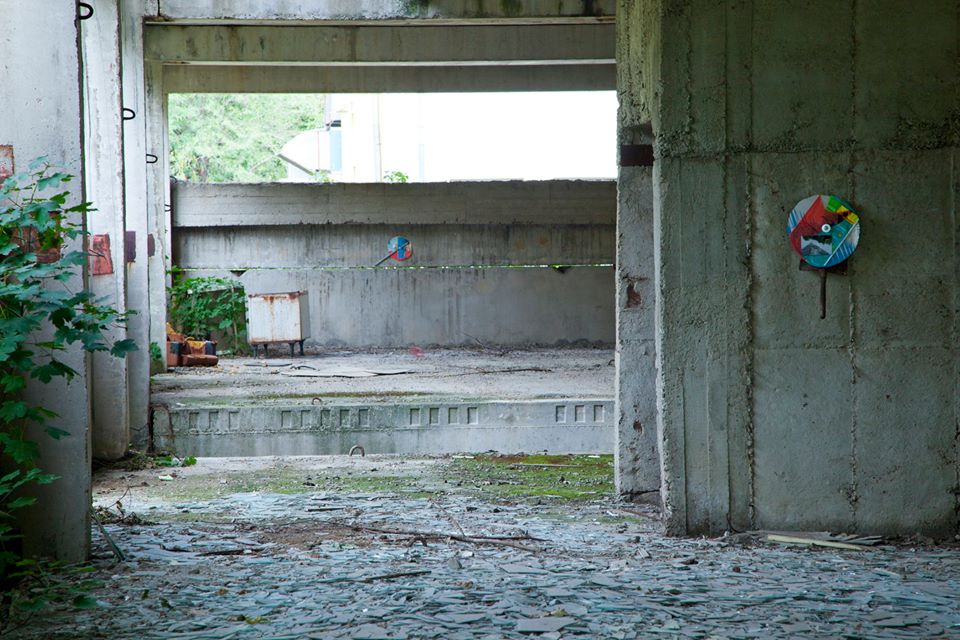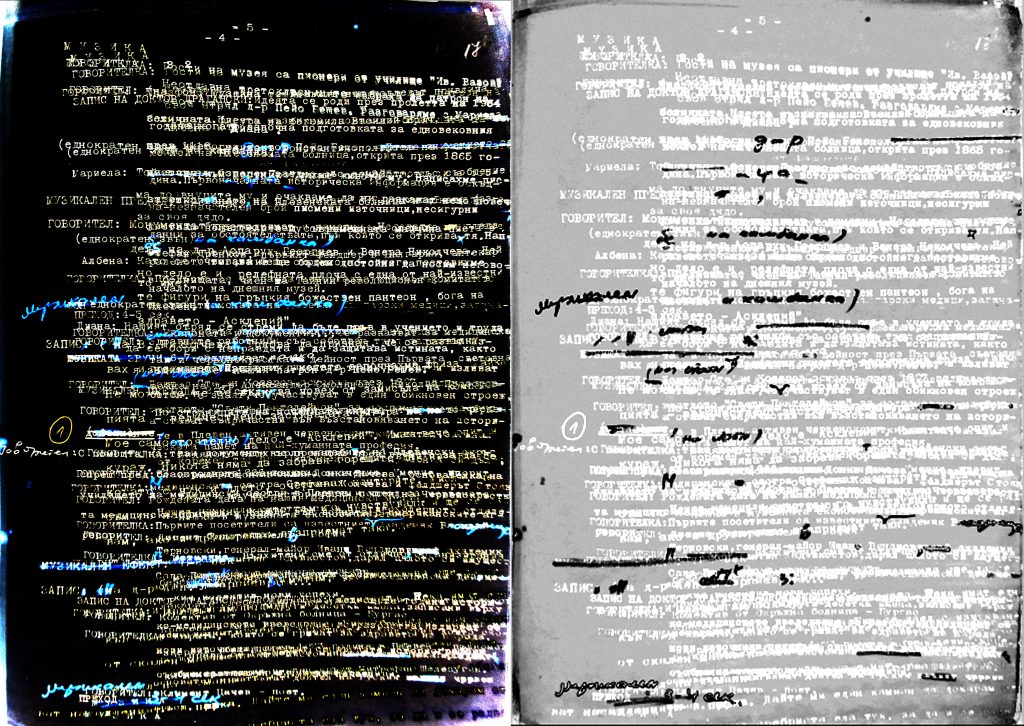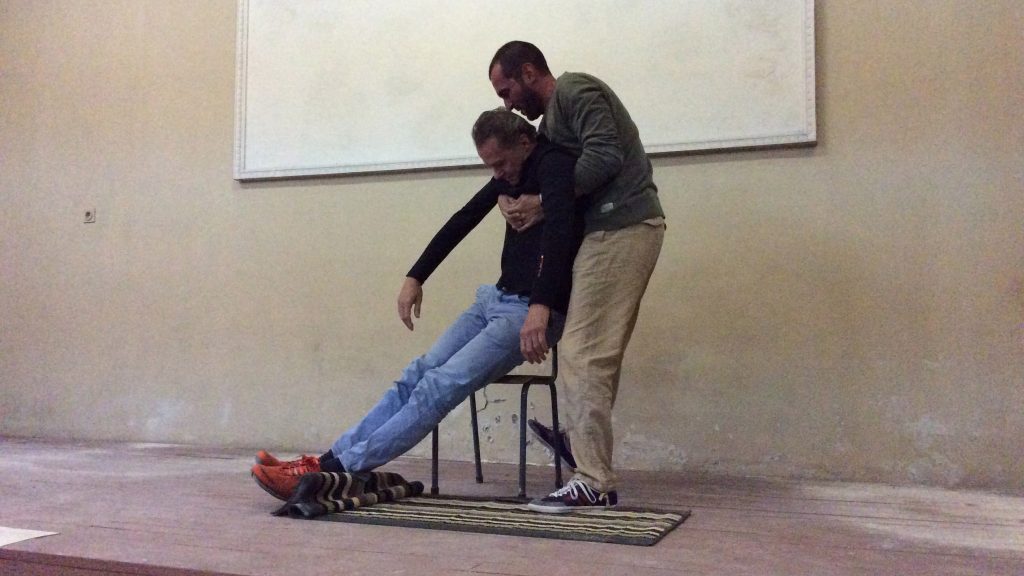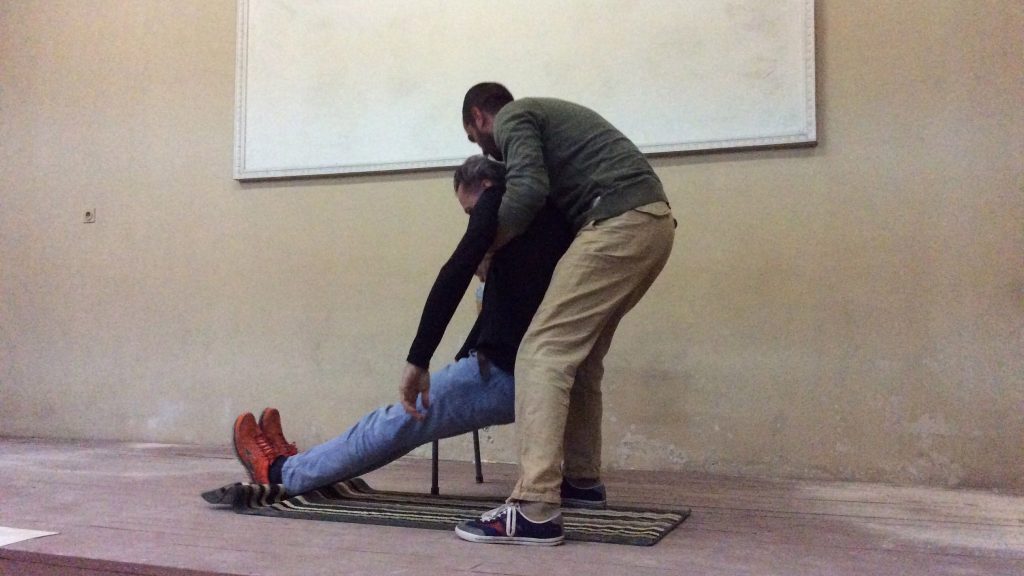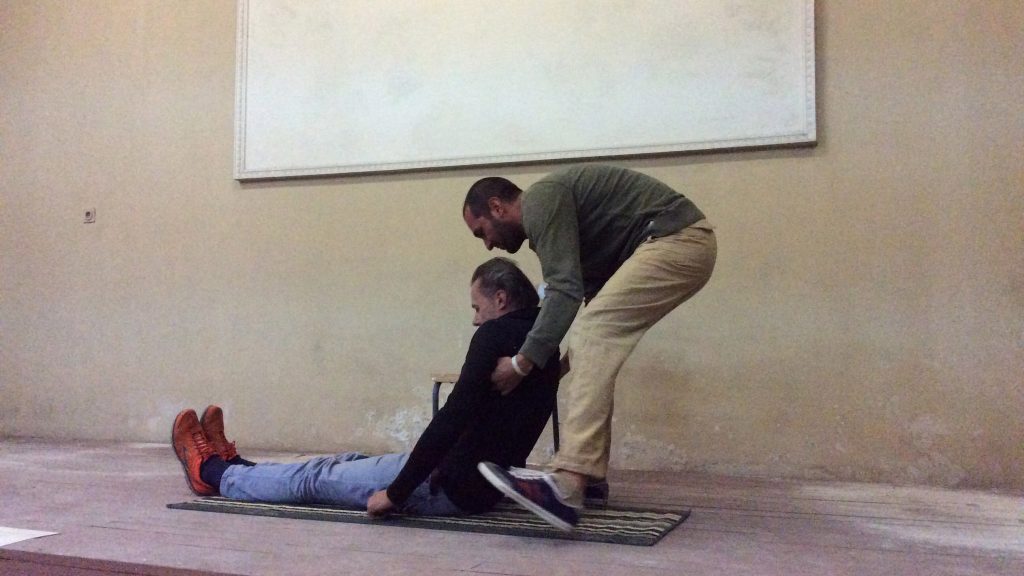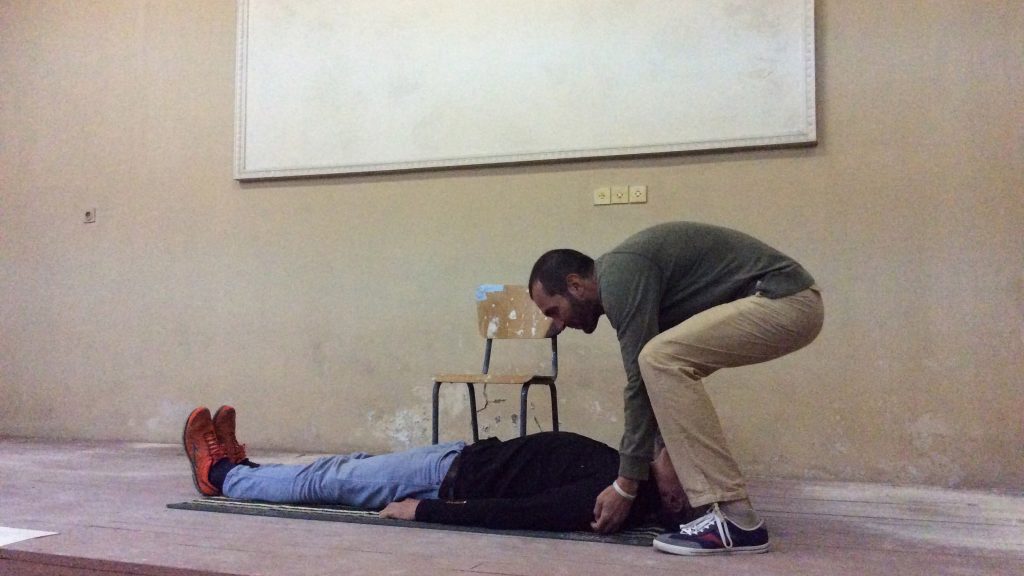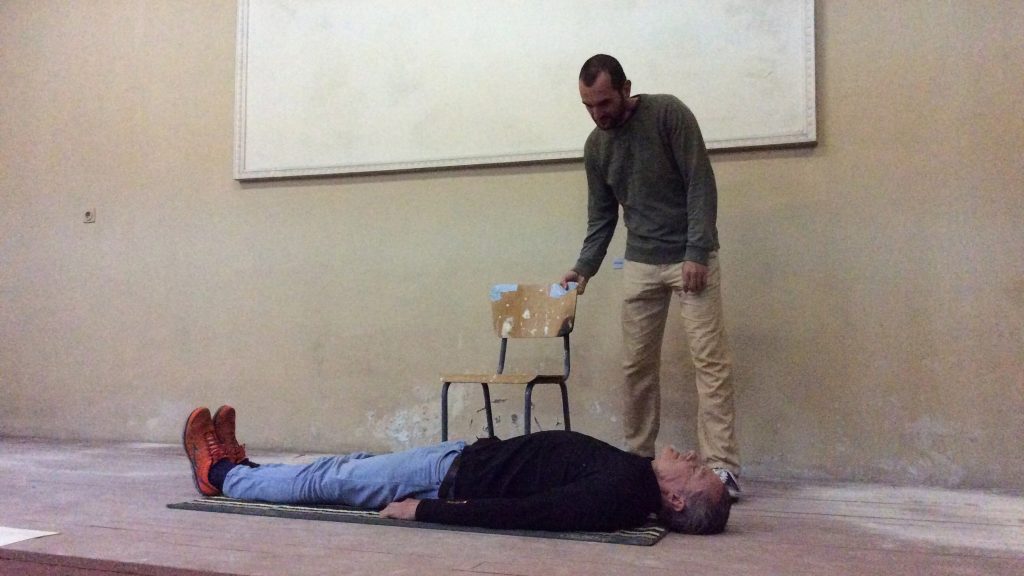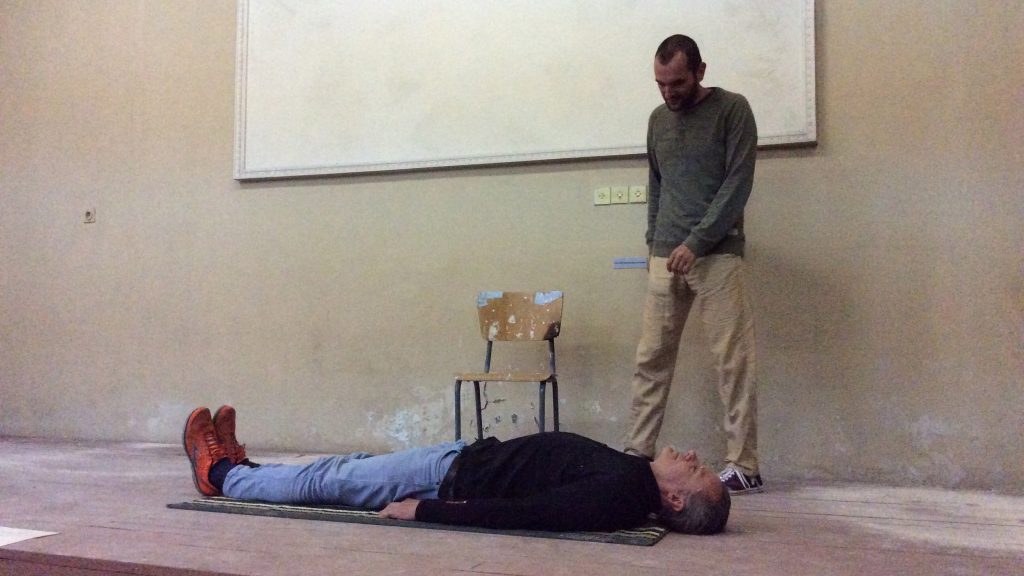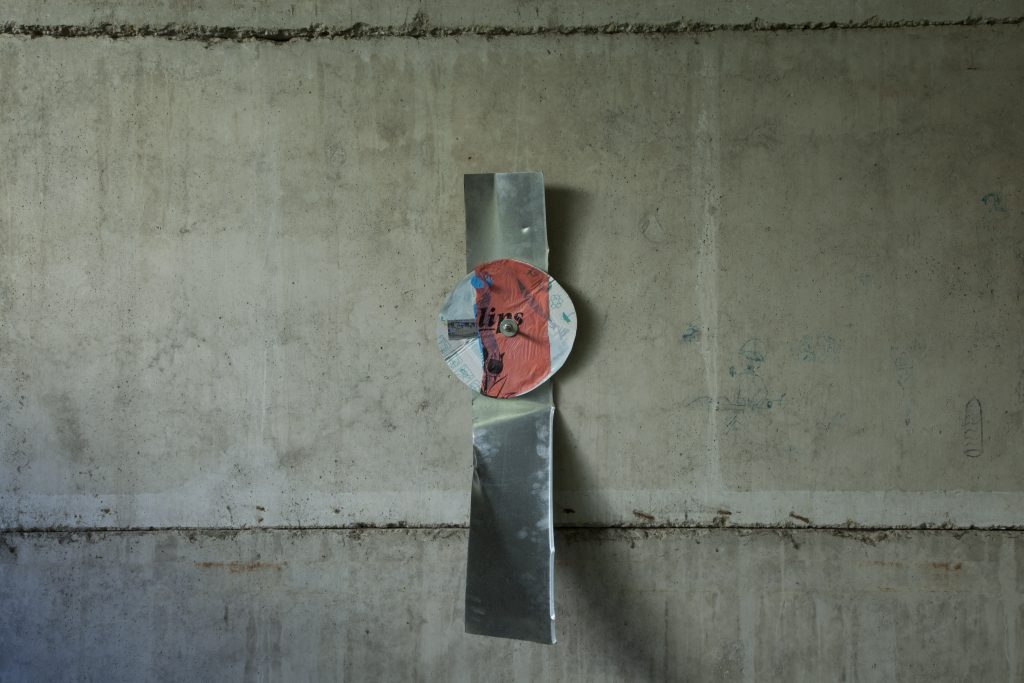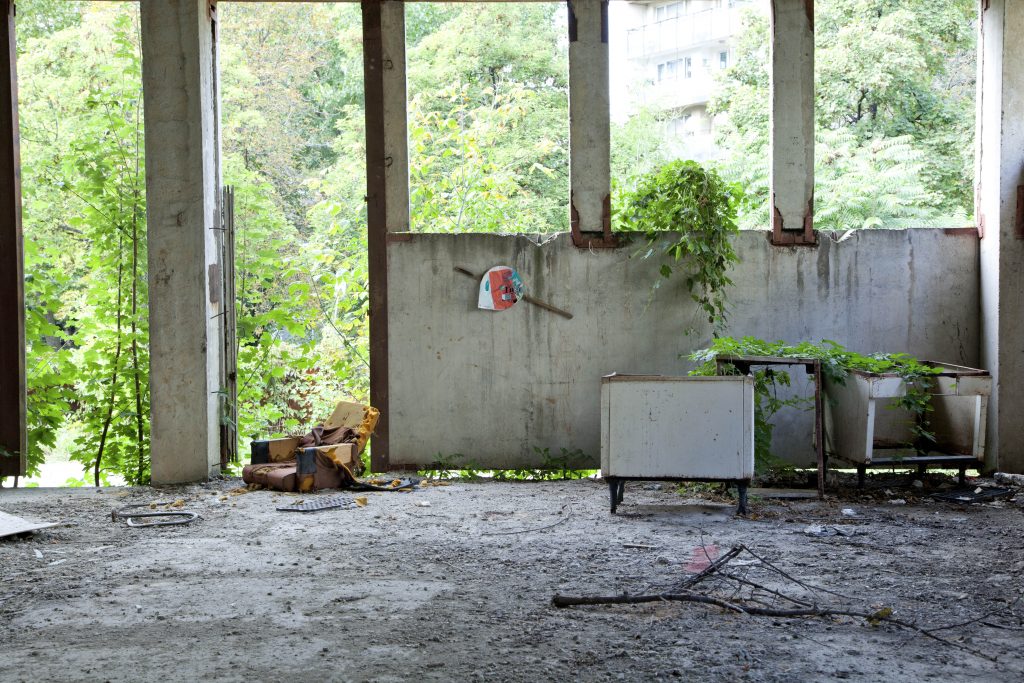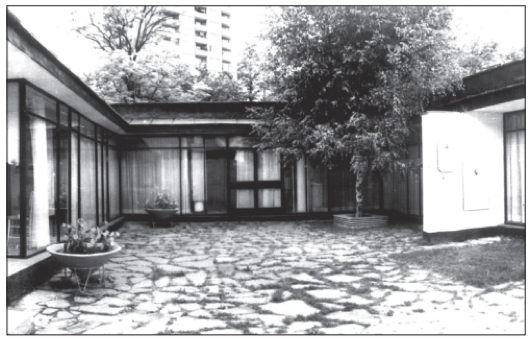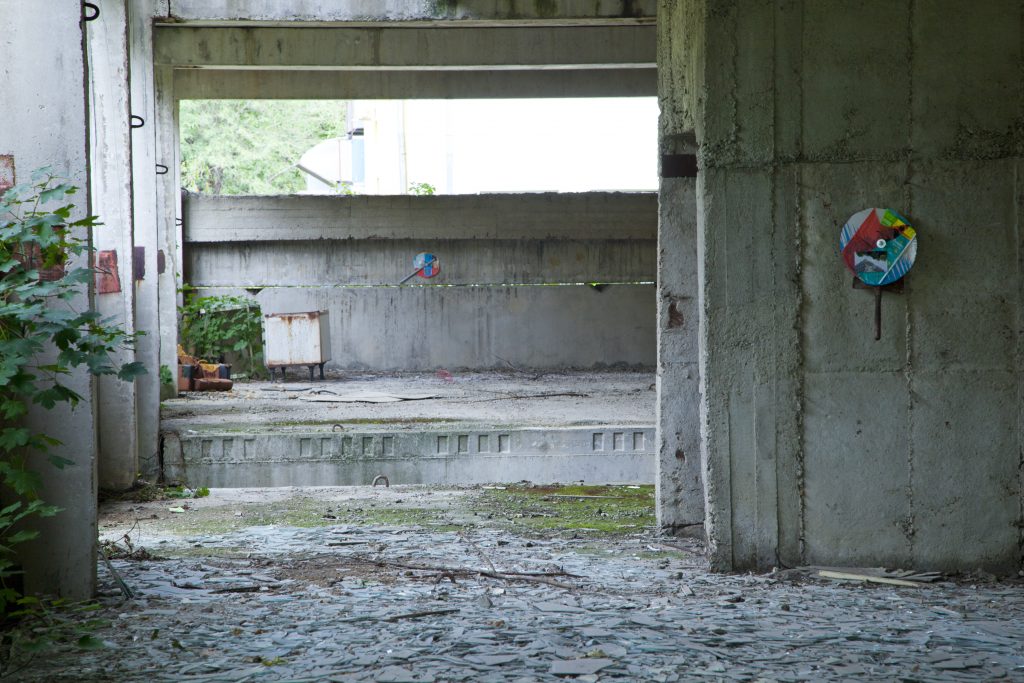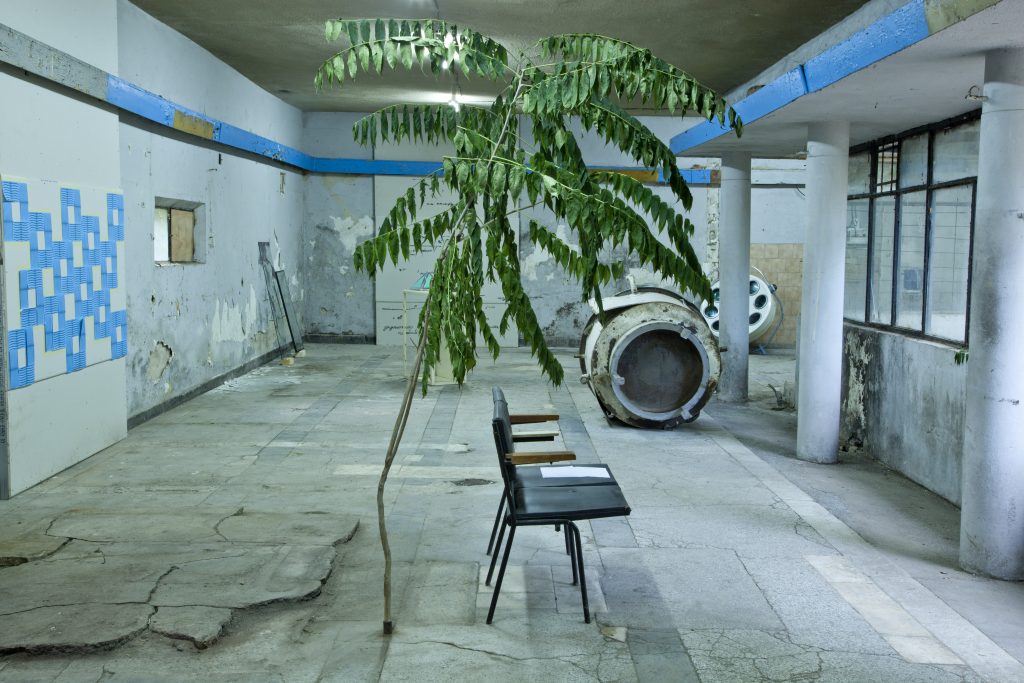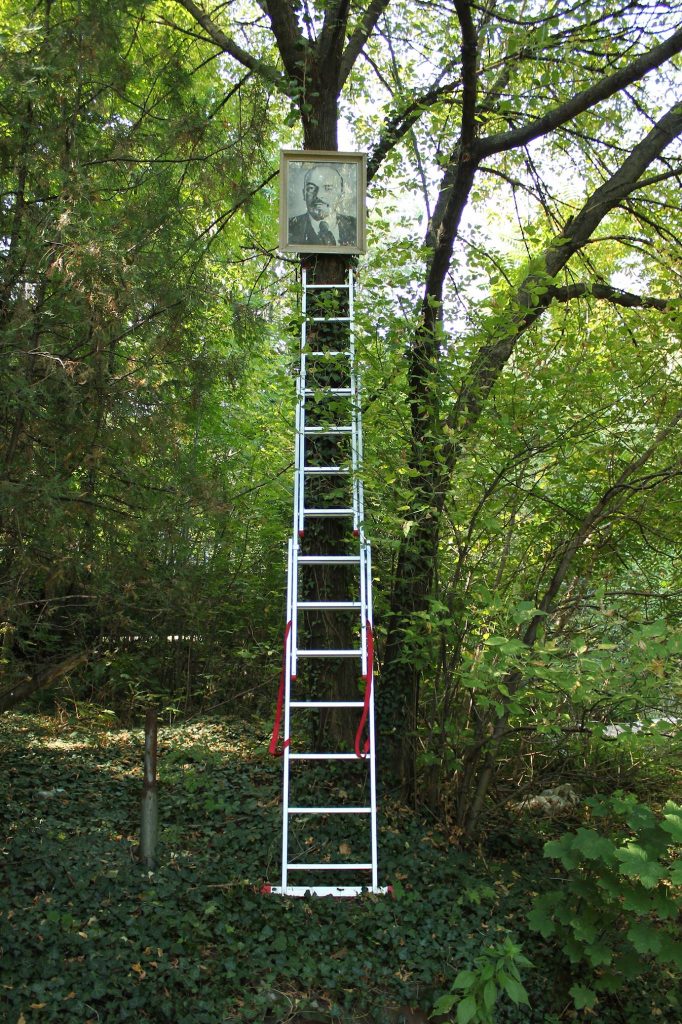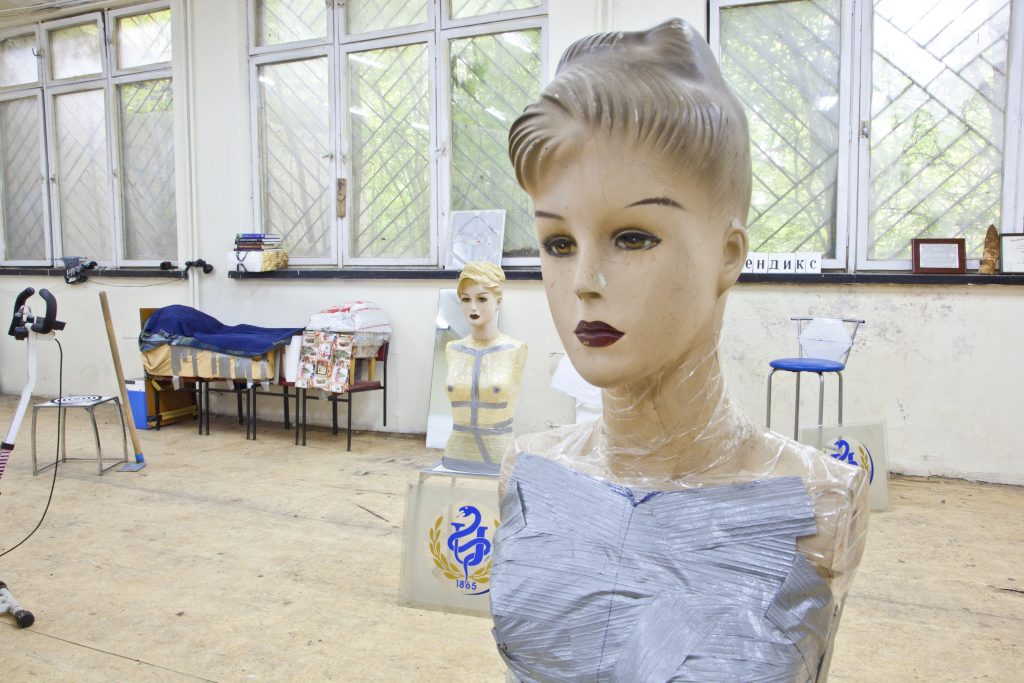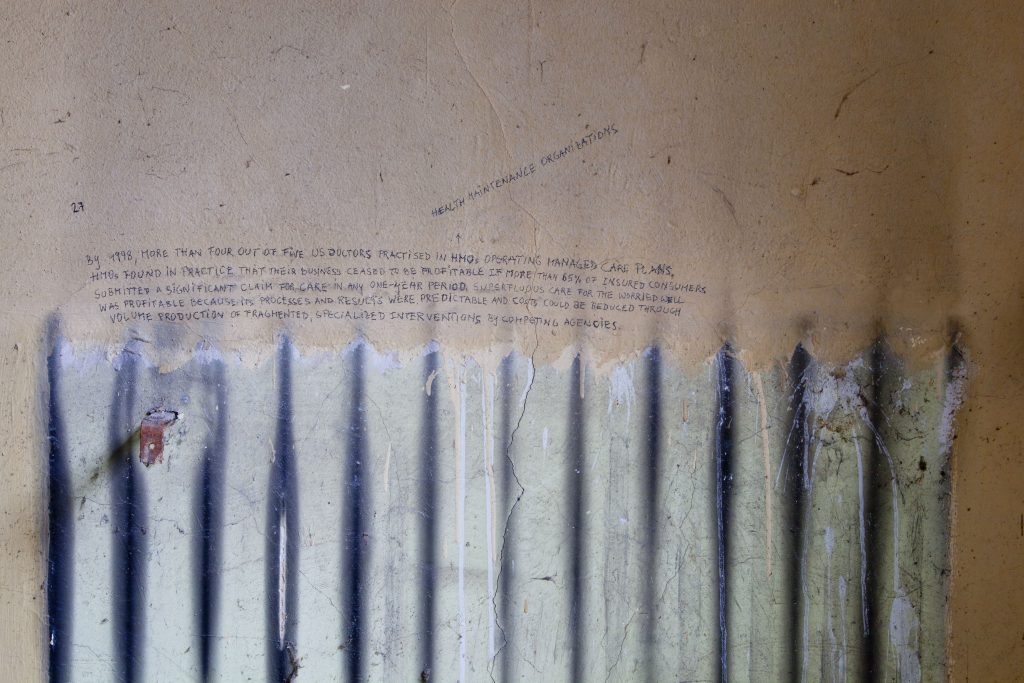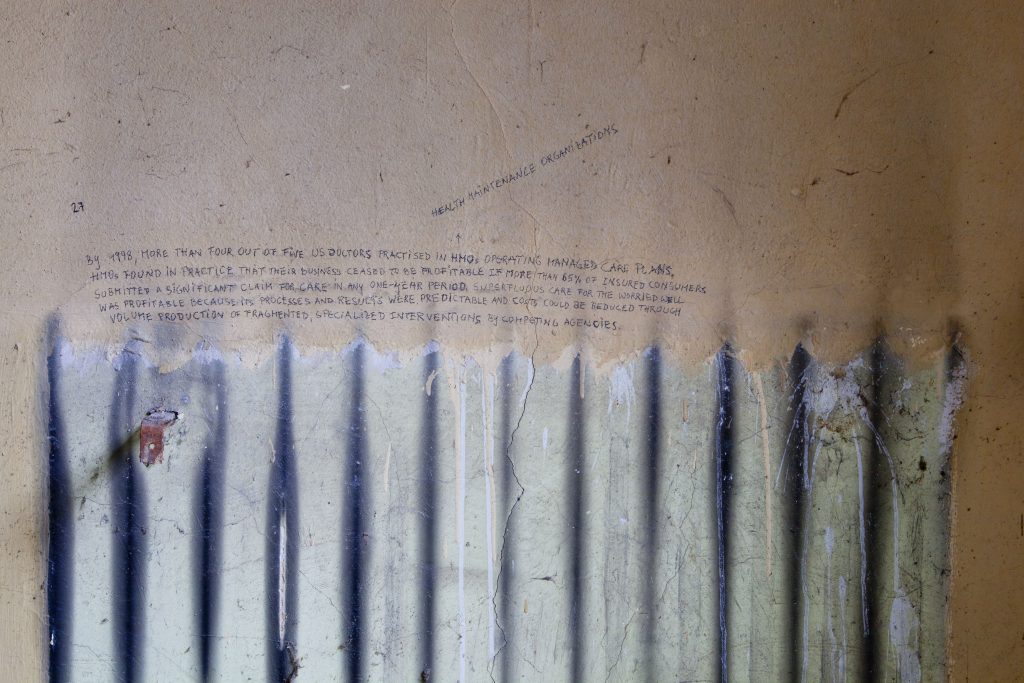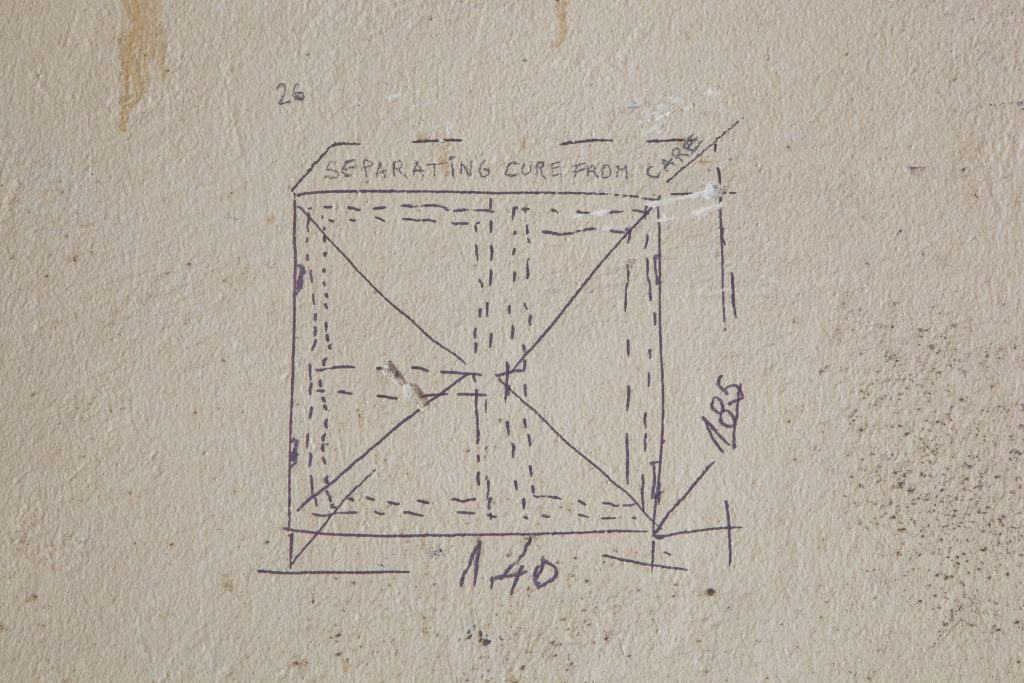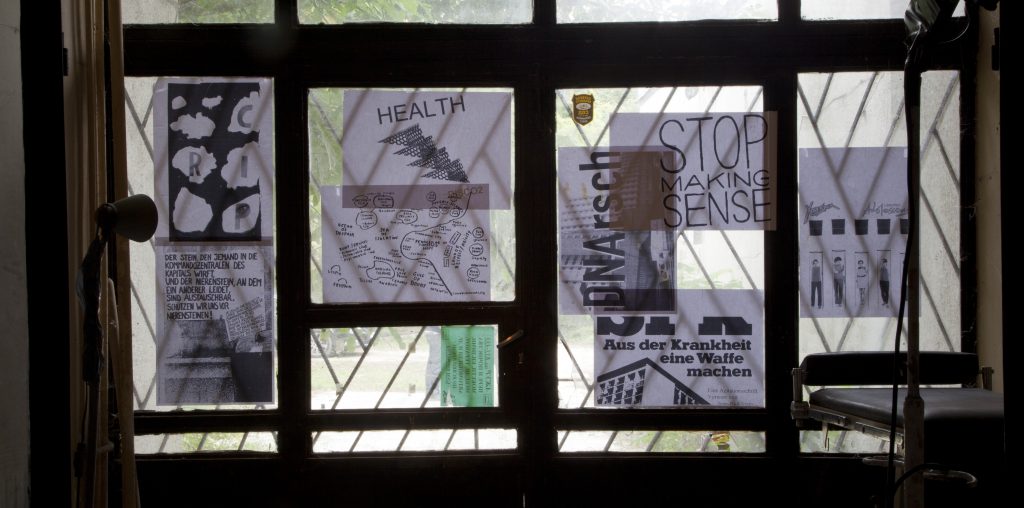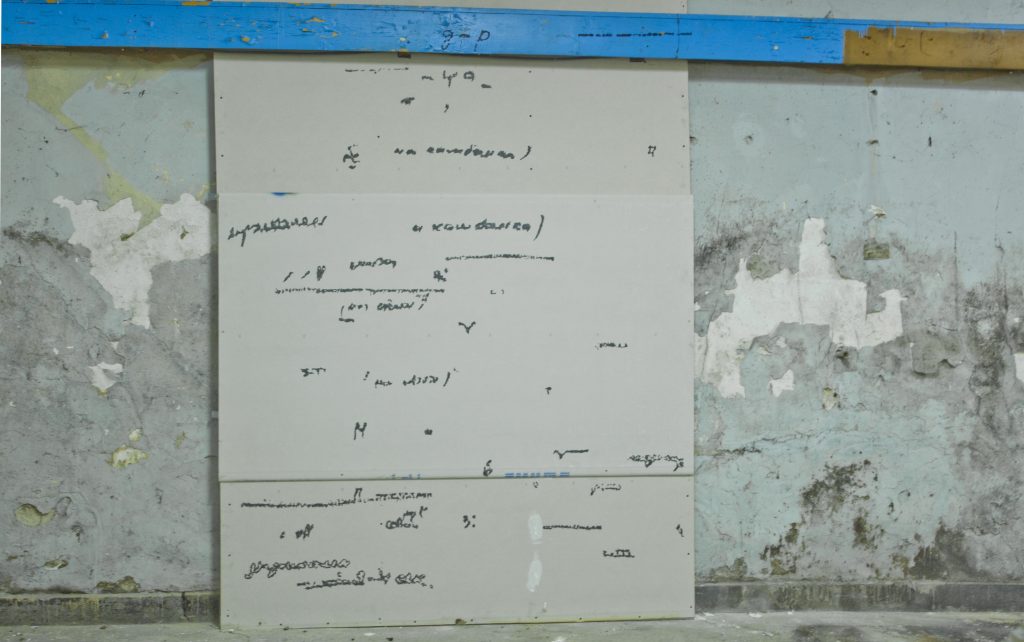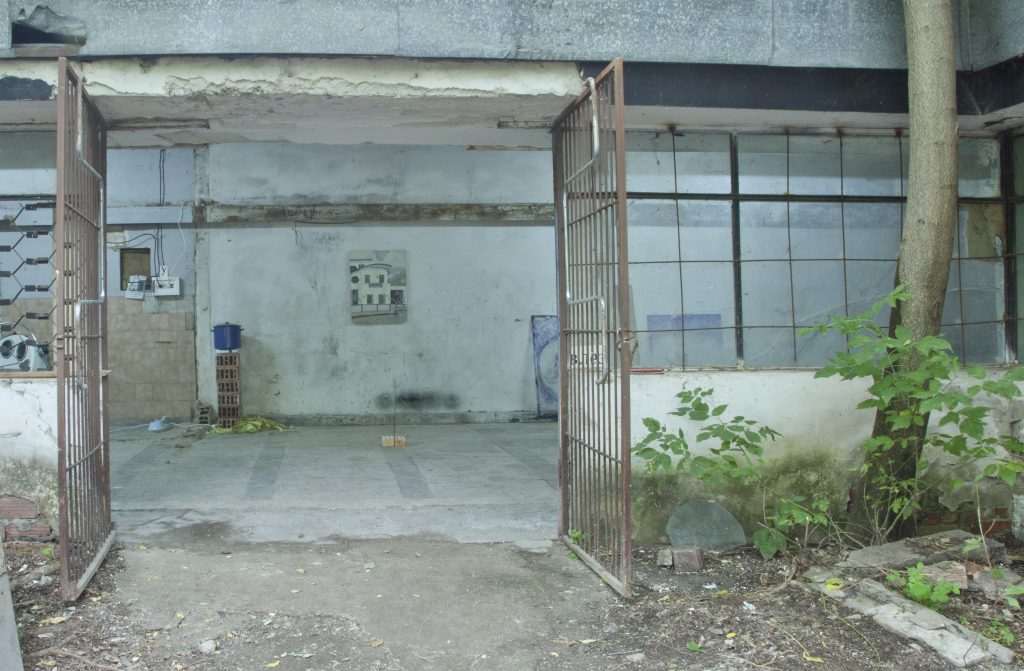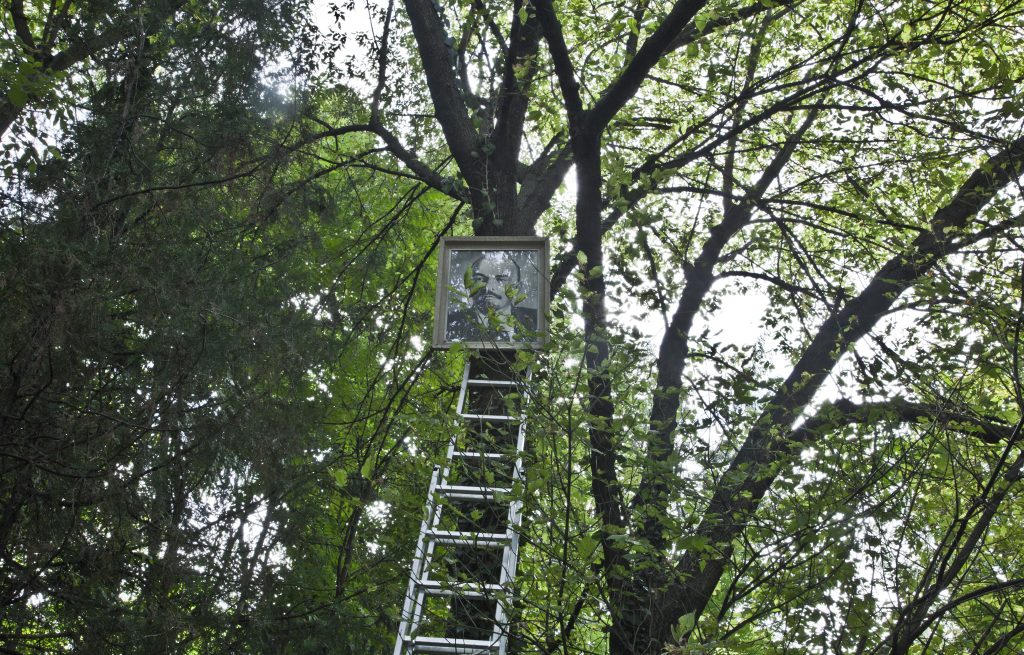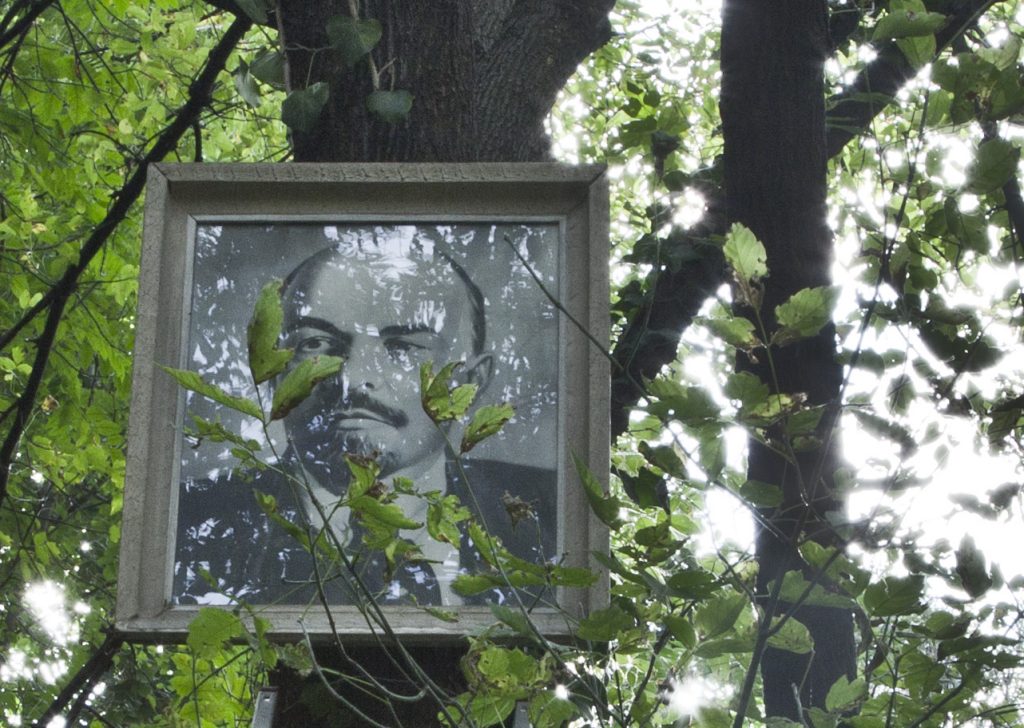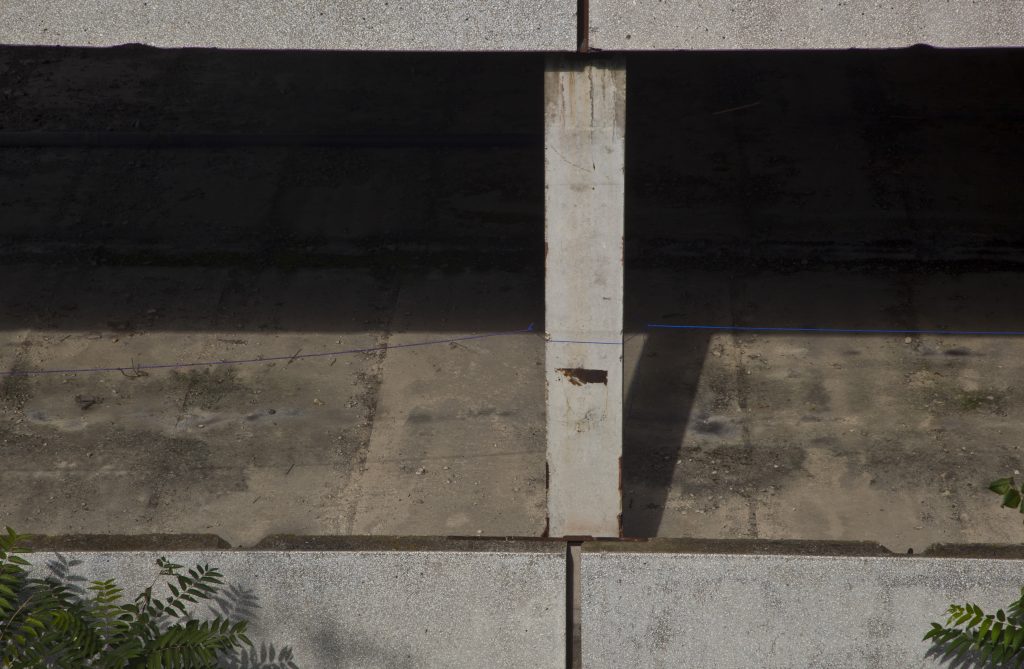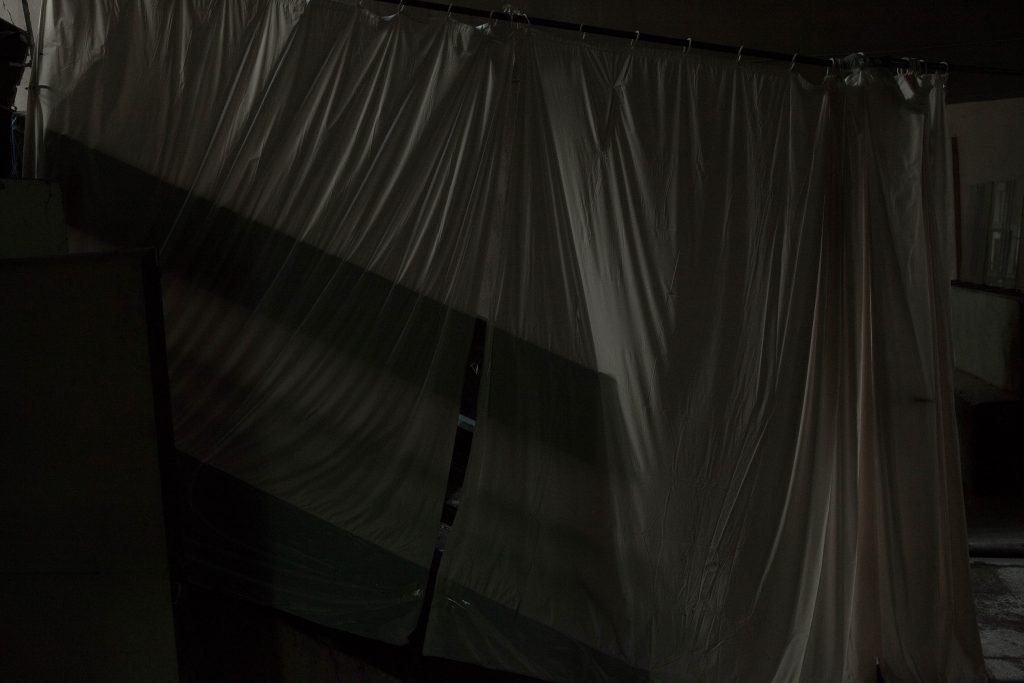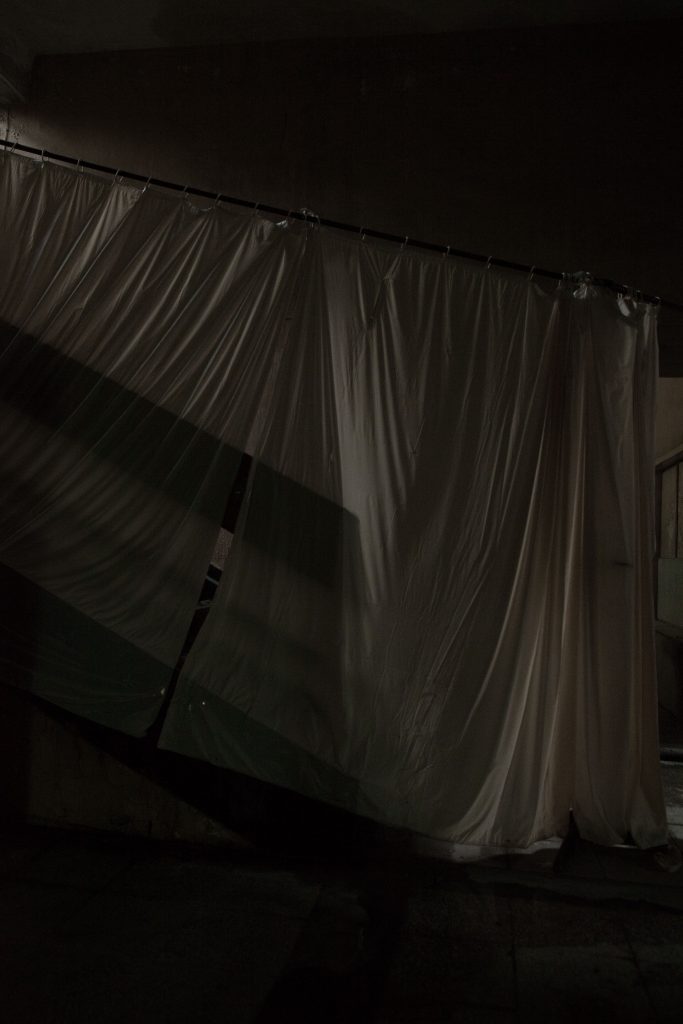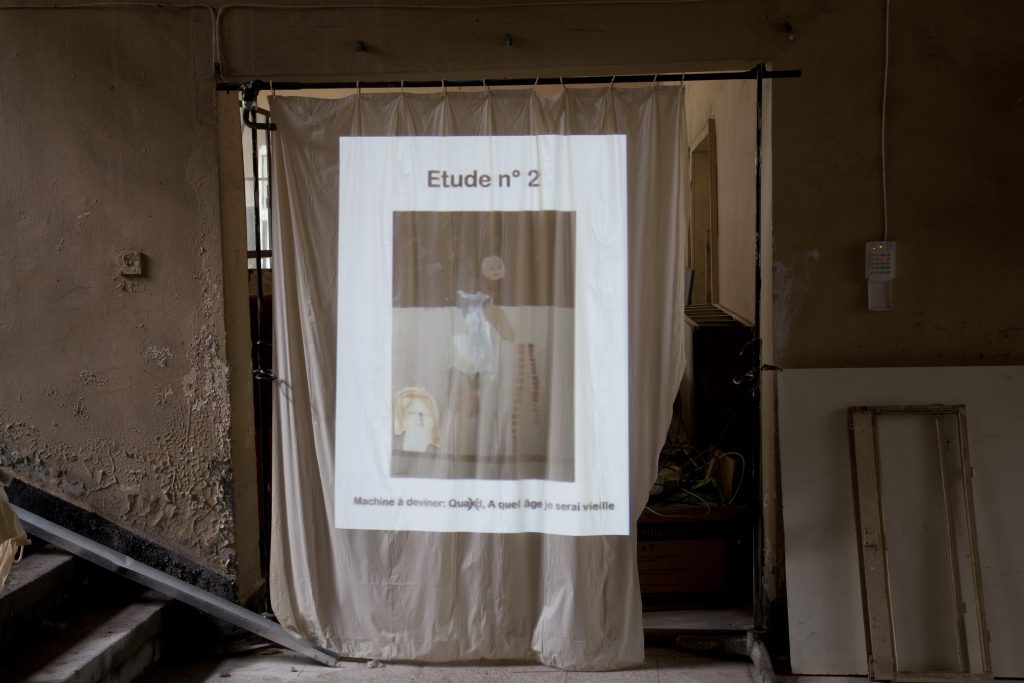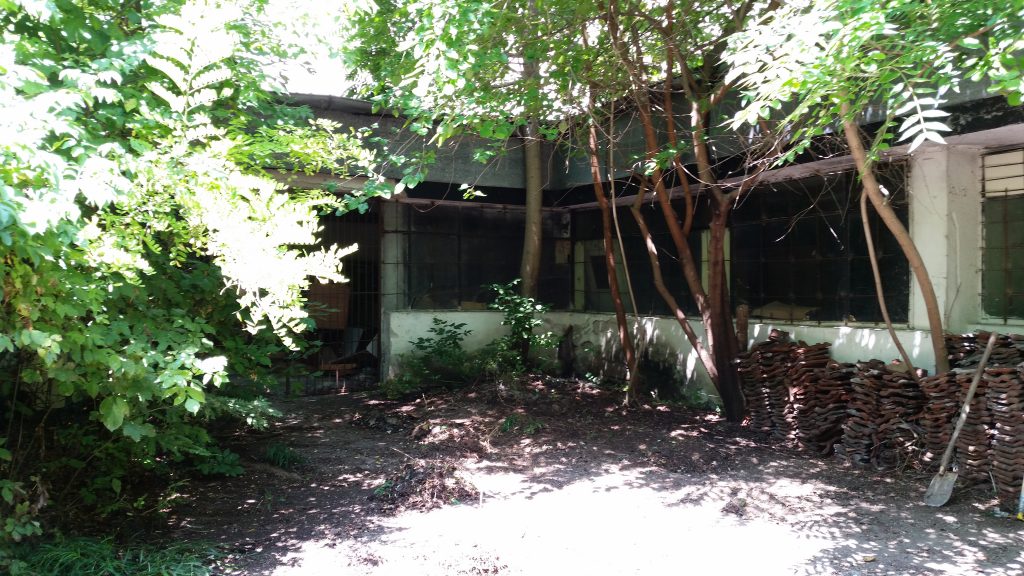Diploma, June 2017
“Foundation” is a 1:5 scale model of the plan (foundation) of the medical museum on the grounds of the University Hospital Georgi Stranski, Pleven, Bulgaria. I have been working with this museum in various projects since 2014 as artist/curator. It is a modest modernist structure built in 1965, and in use as a medical museum until 1989. The title “Foundation” also relates to the architect of the museum – Atanas Petrov, mentioned in the hospital archives, who I searched for until finally meeting in August 2016. In 2015 I established the semi-fictional Atanas Petrov Foundation in his name, for use as a vehicle which could drive a curatorial practice. “Foundation”, which is aesthetically informed by my practice in painting, digital media and intervention in public space, such as the interference of patterns and use of site specific or historical material, references my work in situated practice – involving curation and use of alternative space. “Foundation” is a balance between the ideas of institutionality, architecture, installation/assemblage, public space and social relations.
The booklet accompanying the installation (see attached pdf) is the result of my first conversation with the Architect Atanas Petrov containing architectural ideas on the museum, changing stories, unfinished topics.. Atanas drifts from questions on the museum to archeological ideas of interest to him – incomplete and varied. The transcripted text between Atanas, myself, and a translator, ambiguously reasons the sense of drift between languages, time and consequence.
The centrefold of the attached pdf contains an image of the Architect Atanas Petrov re-constituting a removed memorial wall which was part of the original architectural structure. My reasoning behind this photo, taken specifically as part of my diploma work was to replace a culture of belief with a culture of being, a tongue in cheek immortalisation of the architect as part of his own structure, and as such a return to more natural or human sense of belonging to space, without any ideologies attached.
I make no attempt to charge the history of communist Bulgaria or the architect or that space. The reasons for projects on site were not to accentuate some nostalgic view on modernism under communism, but to understand how to find a valid use now for what is left in its changing context, without destroying cultural heritage. Specific situations, or situated practice – as a form of bridge making to our own history, to learn from problematic ideology in order to find a way to live and die effectively in and among each other.
“I am not interested in reconciliation or restoration, but I am deeply committed to the more modest possibilities of partial recuperation and getting on together. Call that staying with the trouble. And so I look for real stories that are also speculative fabulations and speculative realisms. These are stories in which multispecies players, who are enmeshed in partial and flawed translations across difference, redo ways of living and dying attuned to still possible finite flourishing, still possible recuperation… that which inhabits living and dying accountably to leave the marks of care for those who come after… we can lead ourselves to a vision for living on the earth, a multi species multi class poly-vocal political kind with a vision of justice and a time to come that could be somewhat habitable.” — Haraway
On the assembly of “Foundation”, I recognise the possibility of change in my work, and by that I mean that the ideas evolve and are informed over time by other agencies – ephemeral and mutational, without requiring heavy/fixed sculptures on topics which try to understand or legitimise an ideology of now, but rather allow ideas to evolve as an assemblage. The individual parts make up the whole, but their interaction is active, subject to change. The soft foam bedding with heavy reinforcing steel, interfaced with an abstract array of forms, bound together with gips bandage, recreating the animate stage on which our present necessitates, weaving into our built space.
Future aspects of this project, ongoing at the medical museum with collaboration between artists and architects, sociologists and medical professionals under the Atanas Petrov Foundation are in planning (such as a phd at Akbild Wien, as discussed with Prof. Sabeth Buchmann starting 2018), with the idea of recuperation as method. Recuperation can be taken as recuperation of the medical museum and care of its histories, care as a service to the patient, care within the institution and its problems at hand, care of the museum park and its environment, invasive or other. It is not the intention to envisage all factors as equal, but that all are present in the same specificity (site) and shall continue to have possible futures if we care for them properly. Ideas for that space would be to recuperate the medical museum as a contemporary institution for use within the medical institution – a parasitic form of institutionality which questions the role of artist as service provider, but also describes how artistic practice can provide a service in the function of care, and how this in turn can inform artistic practice.
Architectural space, when described through the anthropological theory of art as “social relations in the vicinity of objects mediating social agency” (-Alfred Gell) allows for us to “reclaim animism” (- Isabelle Stengers) as an important tool of our research, outside the objectivity of science and the subjective triumphalism of modernism. Our foremost agent here, the medical museum, has the potential to ascertain qualities of description which occur within social relations, the field of medicine, the stigma of illness and the emotional response to it. How can we develop a space with an animative power, inviting participation which can deal with what ethnologist Eduardo Viveiros de Castro has called a “decolonization of thought”, outside of hegemonic scientific rationality, which can be understood as itself the product of a colonization process? To build this bridge to animism from within an institutional basis of rational processes. Recuperation on empirical levels of the thoughts and futures of beings and animate space, one that ignores the modernist aspirations of appropriative suprematism, by reinvigorating the space far removed from its hegemonic origins, one that looks toward the individual, the patient as active partner in the conversations that unfold there.
